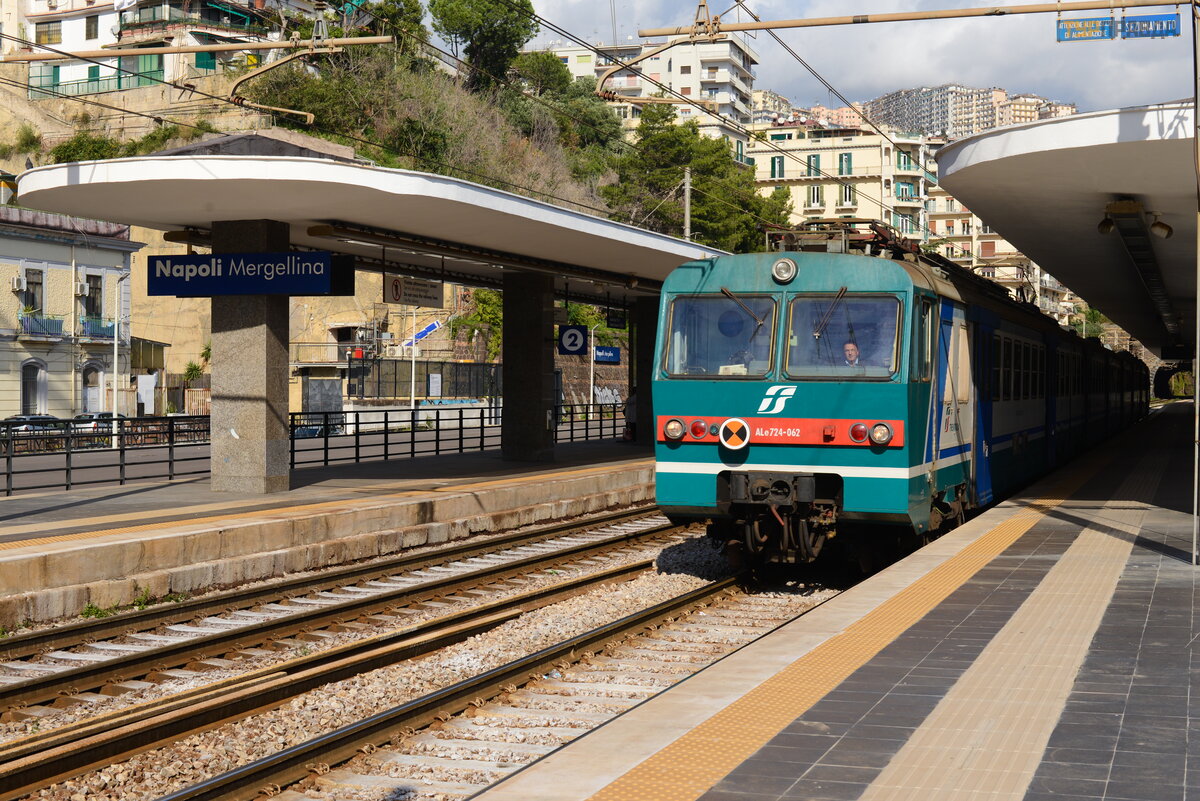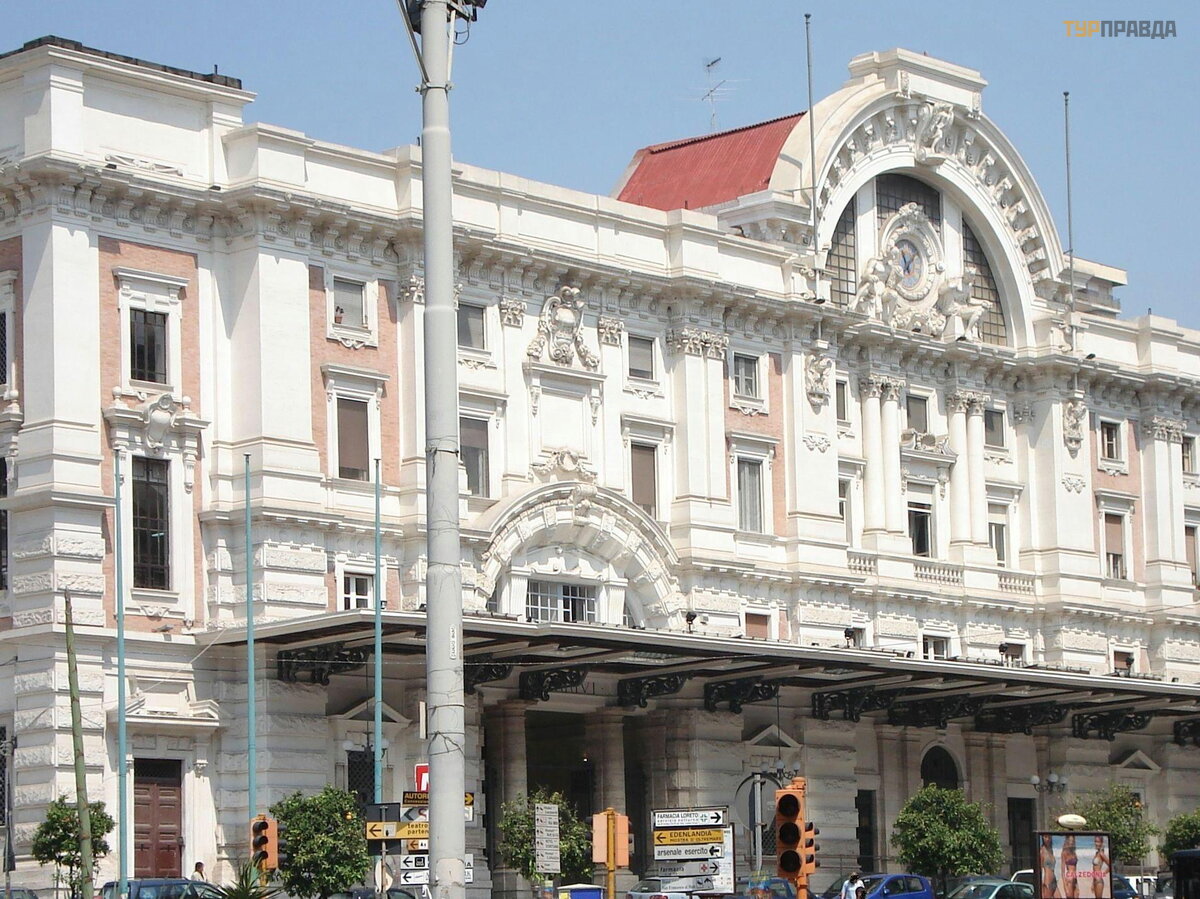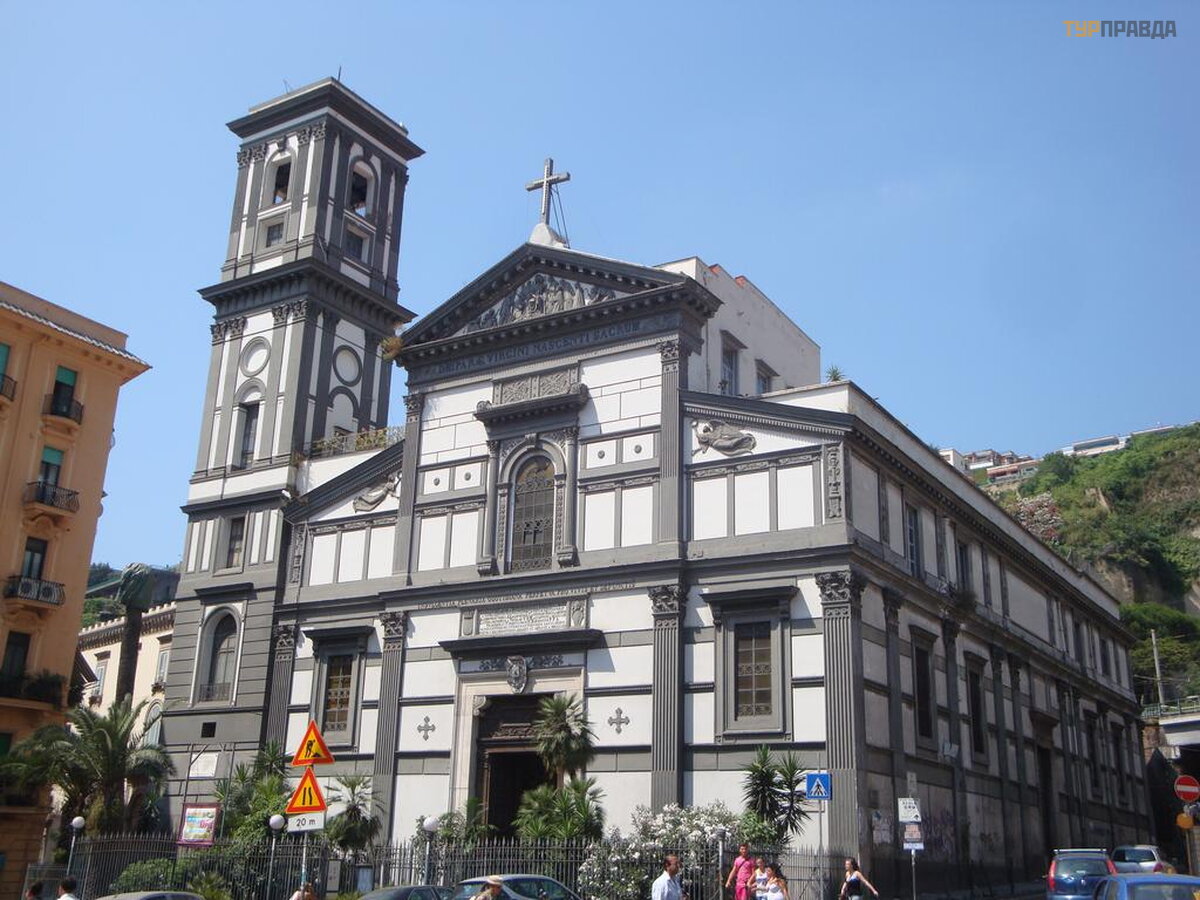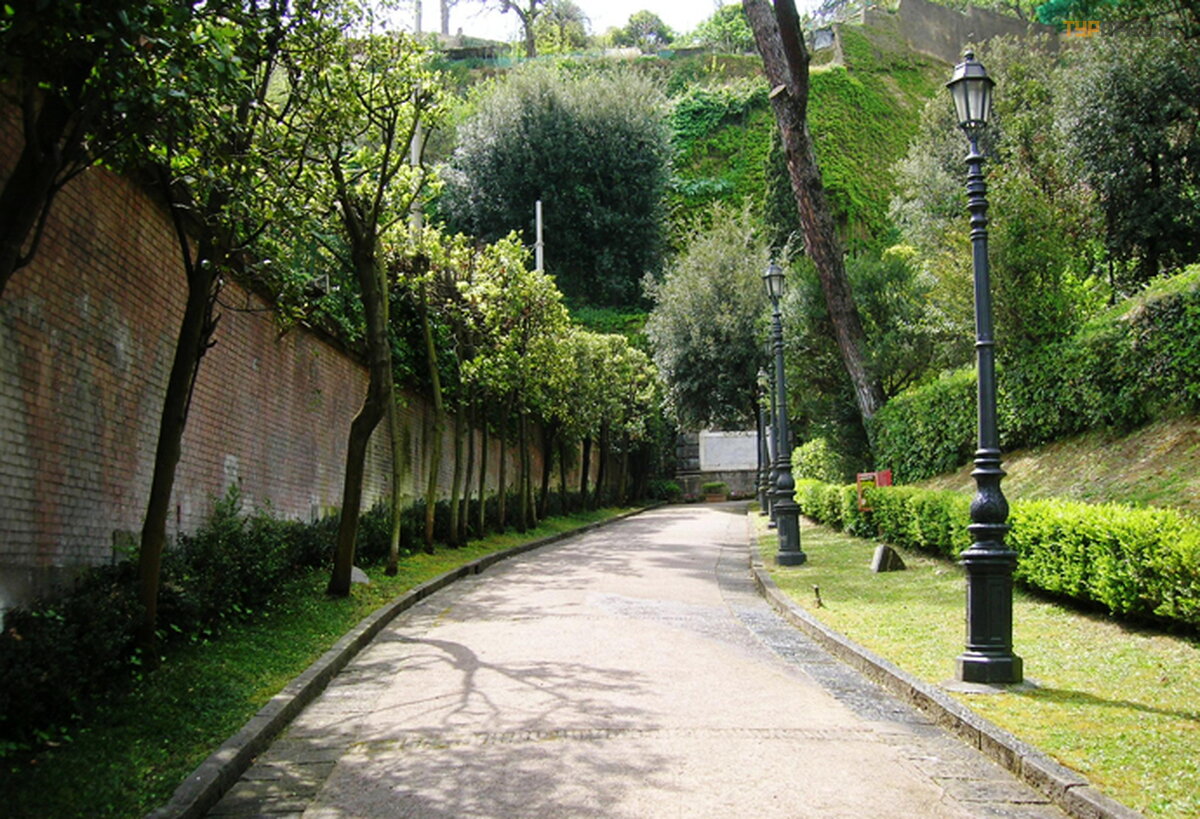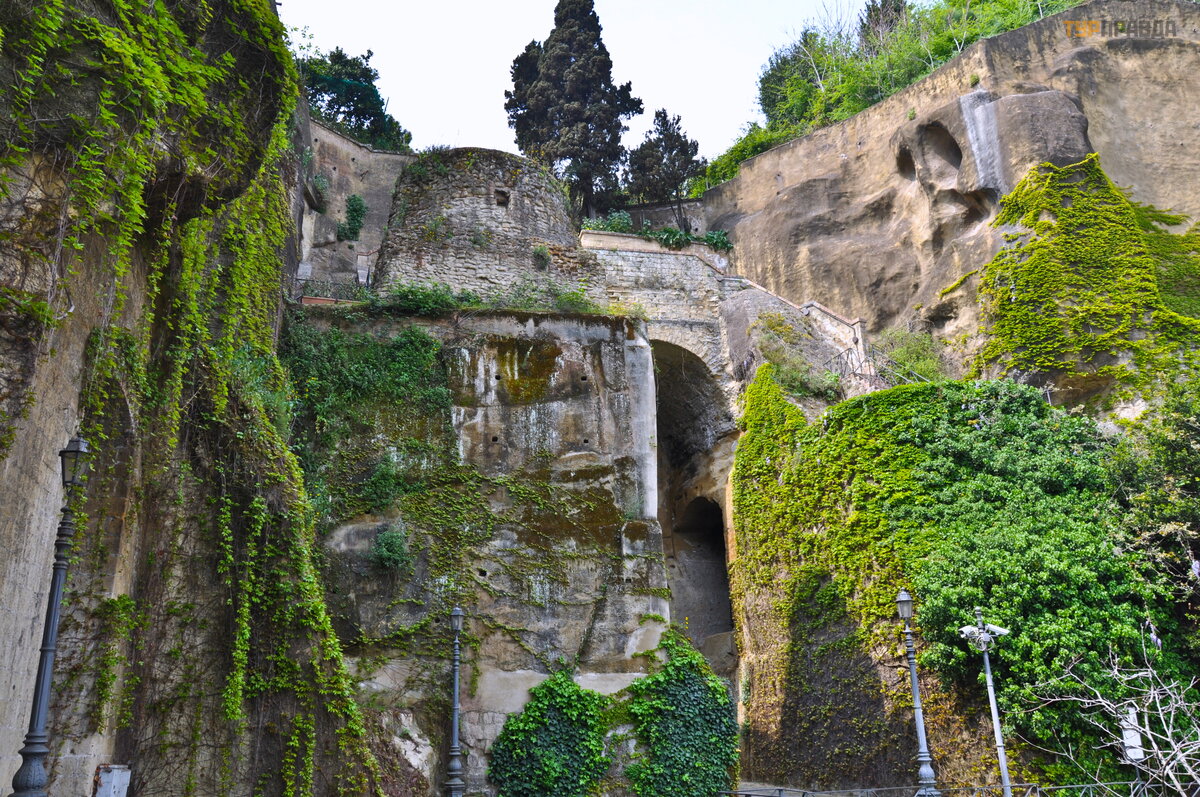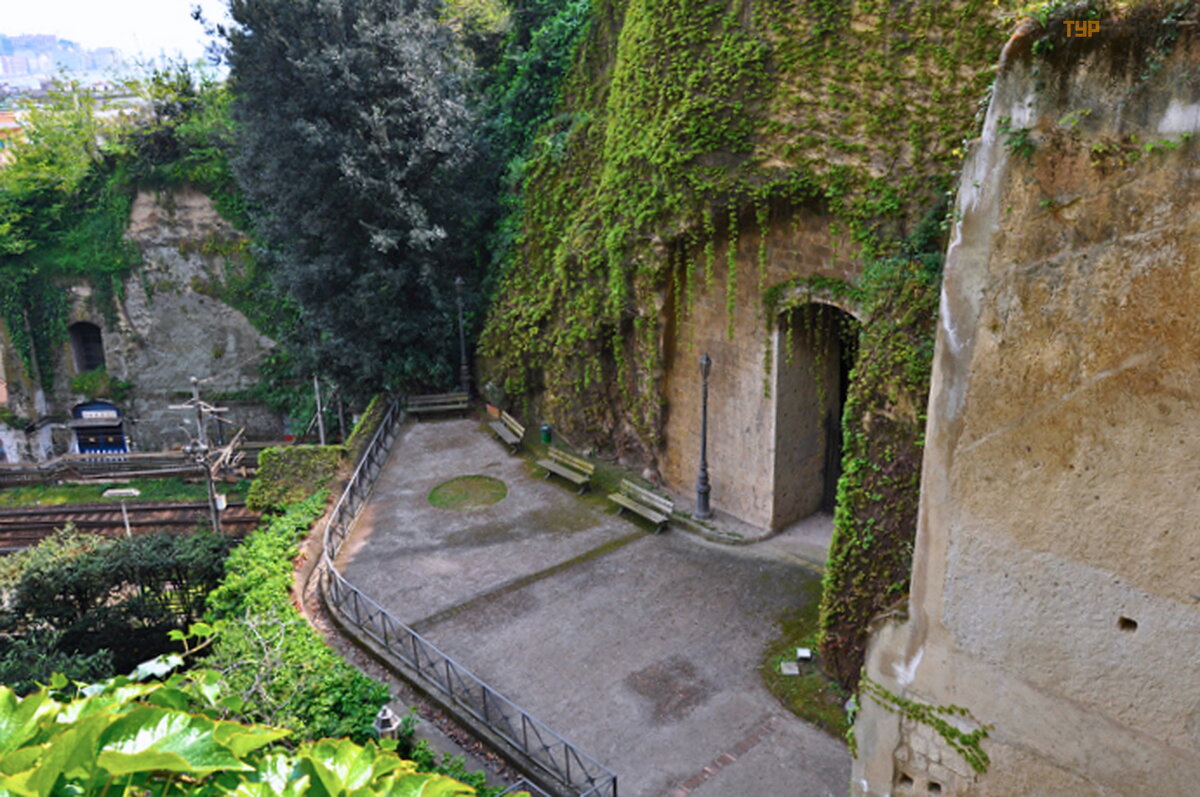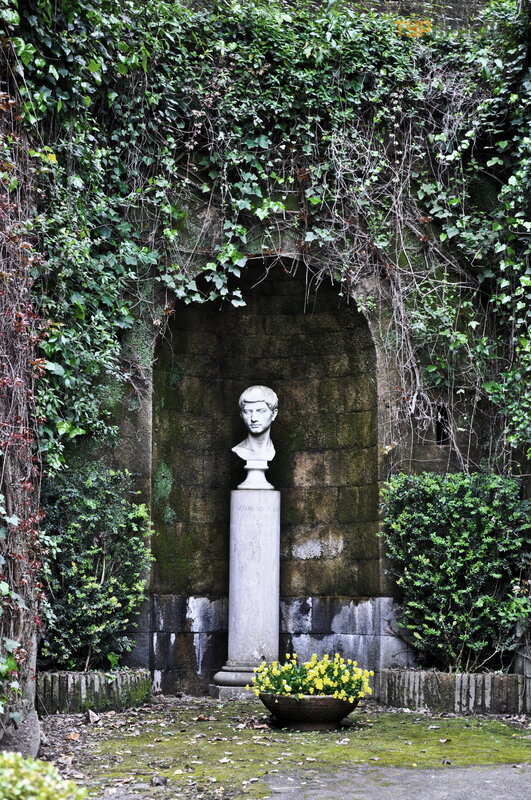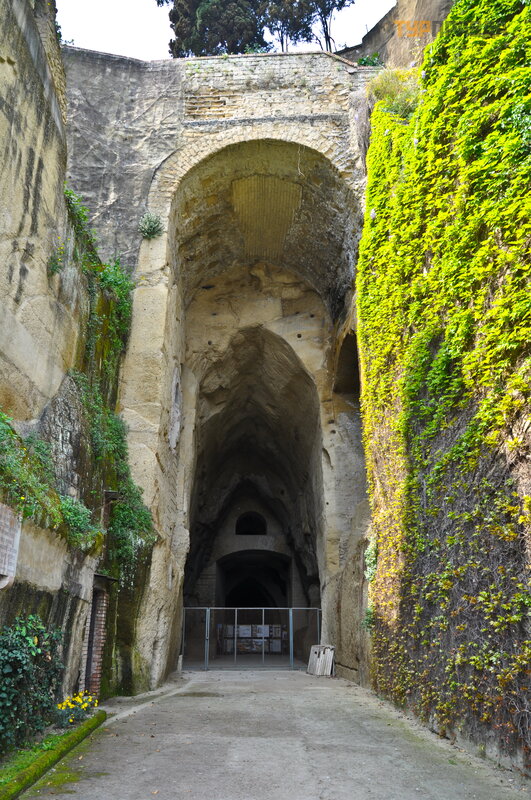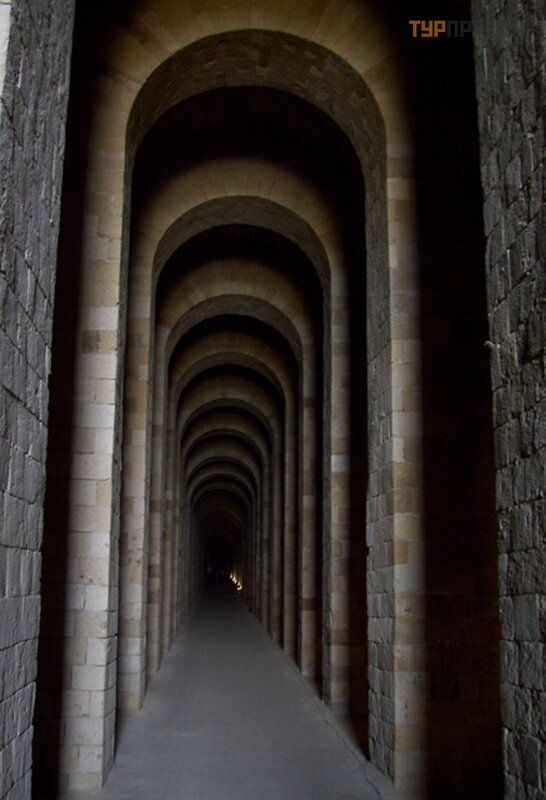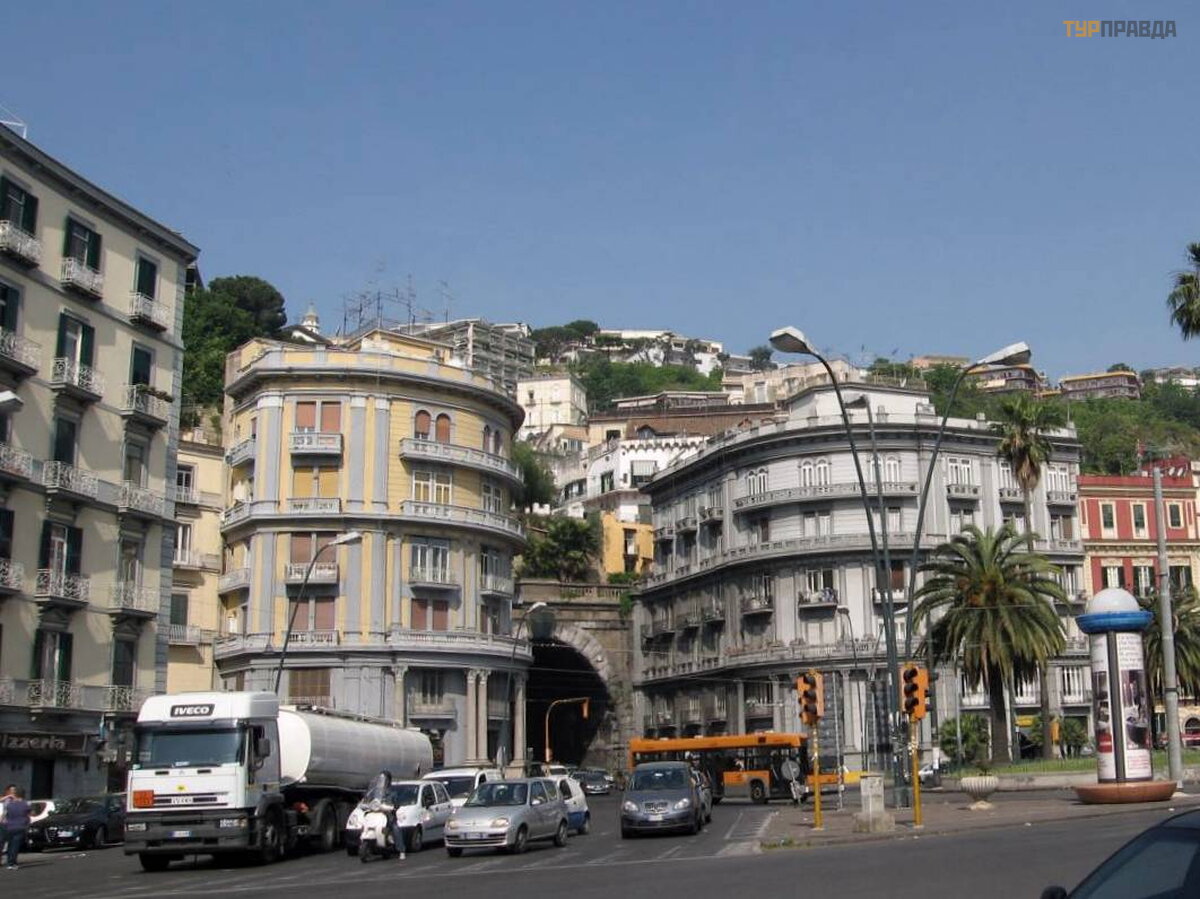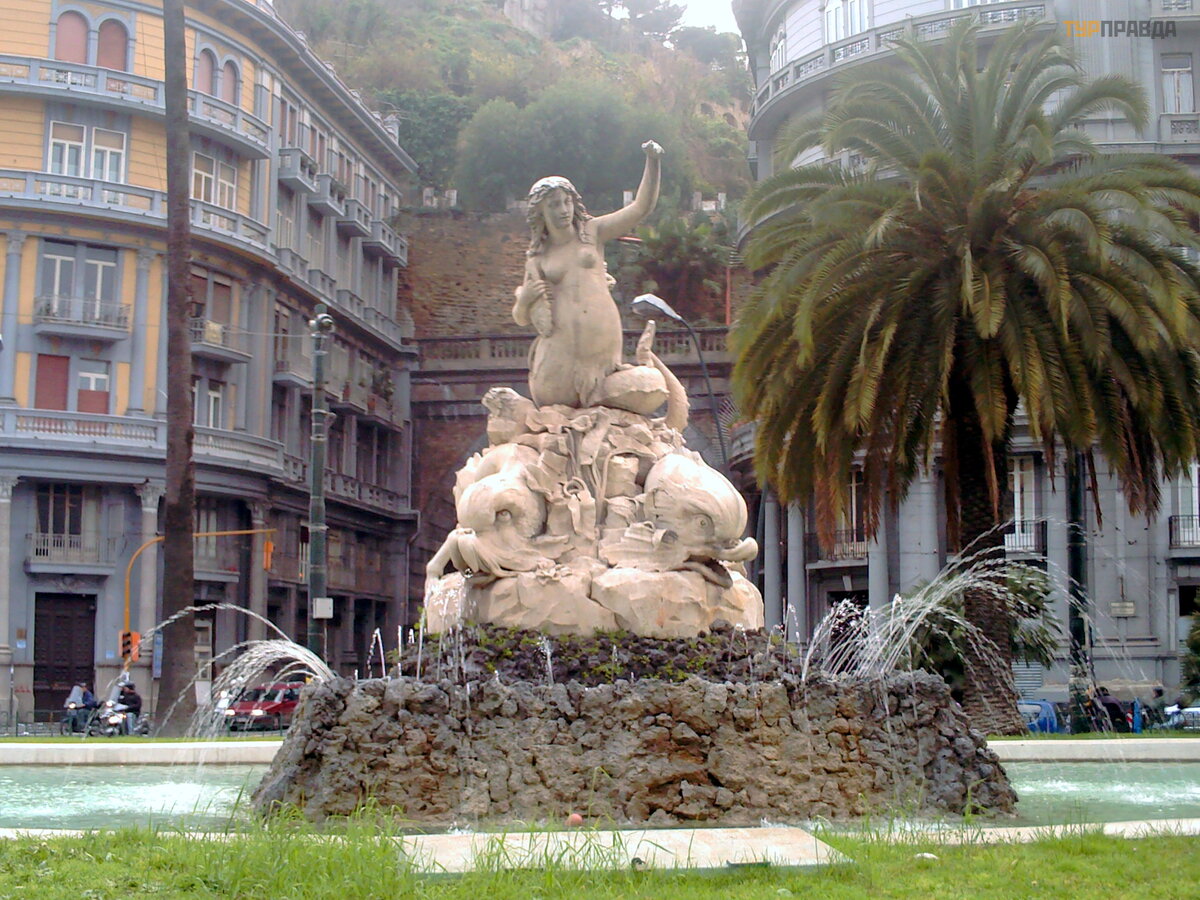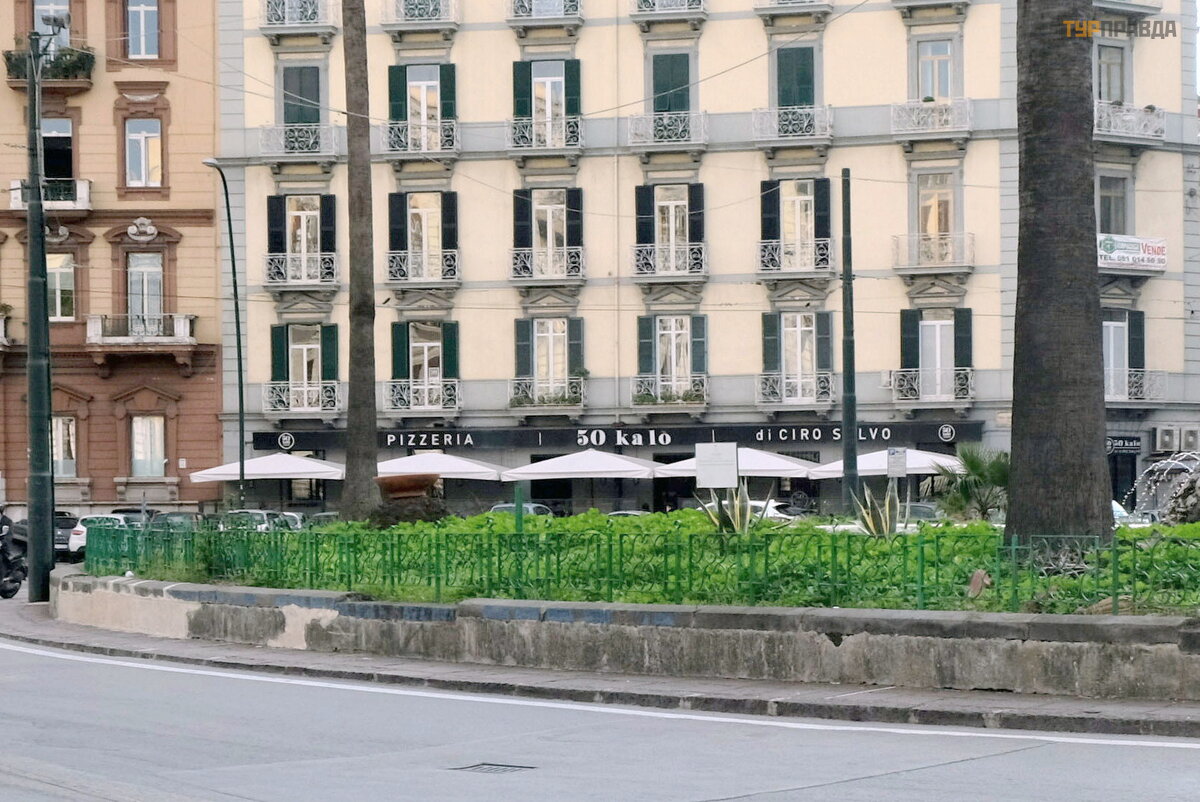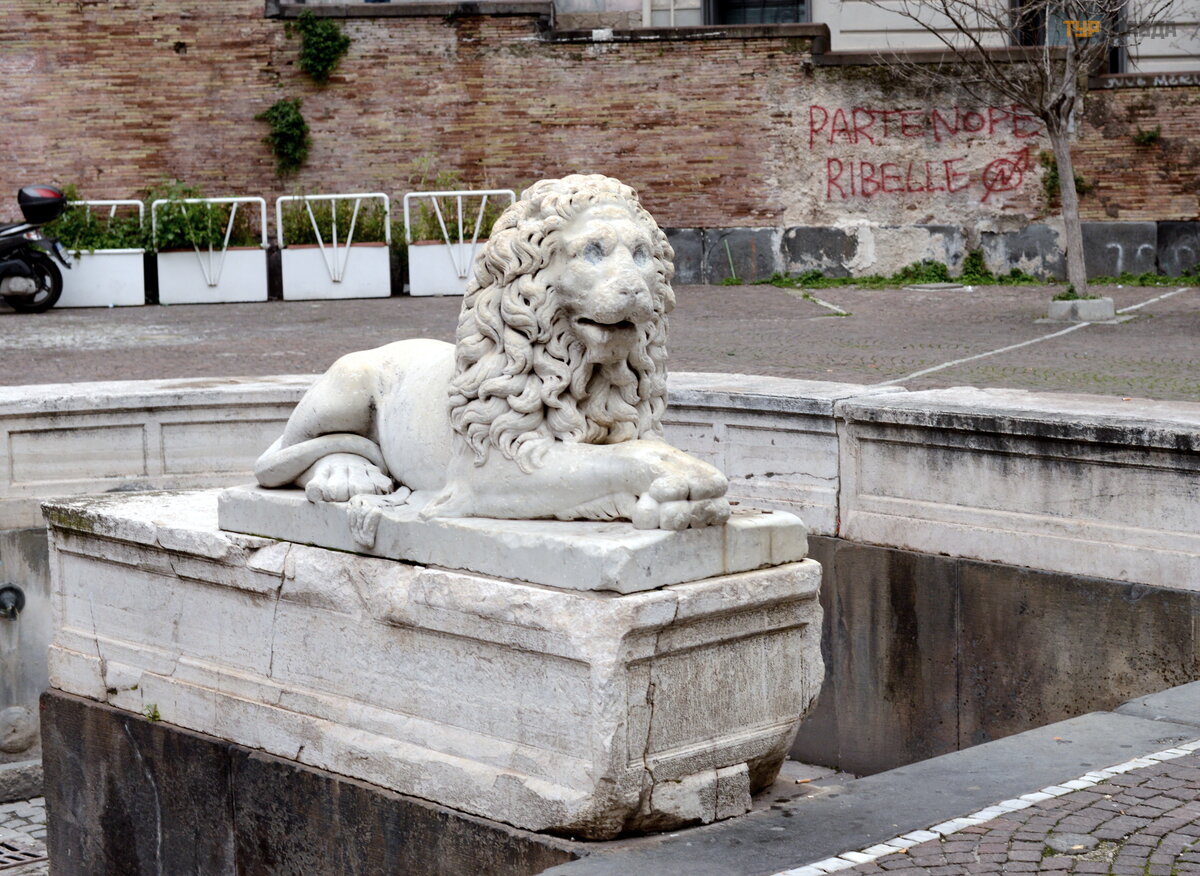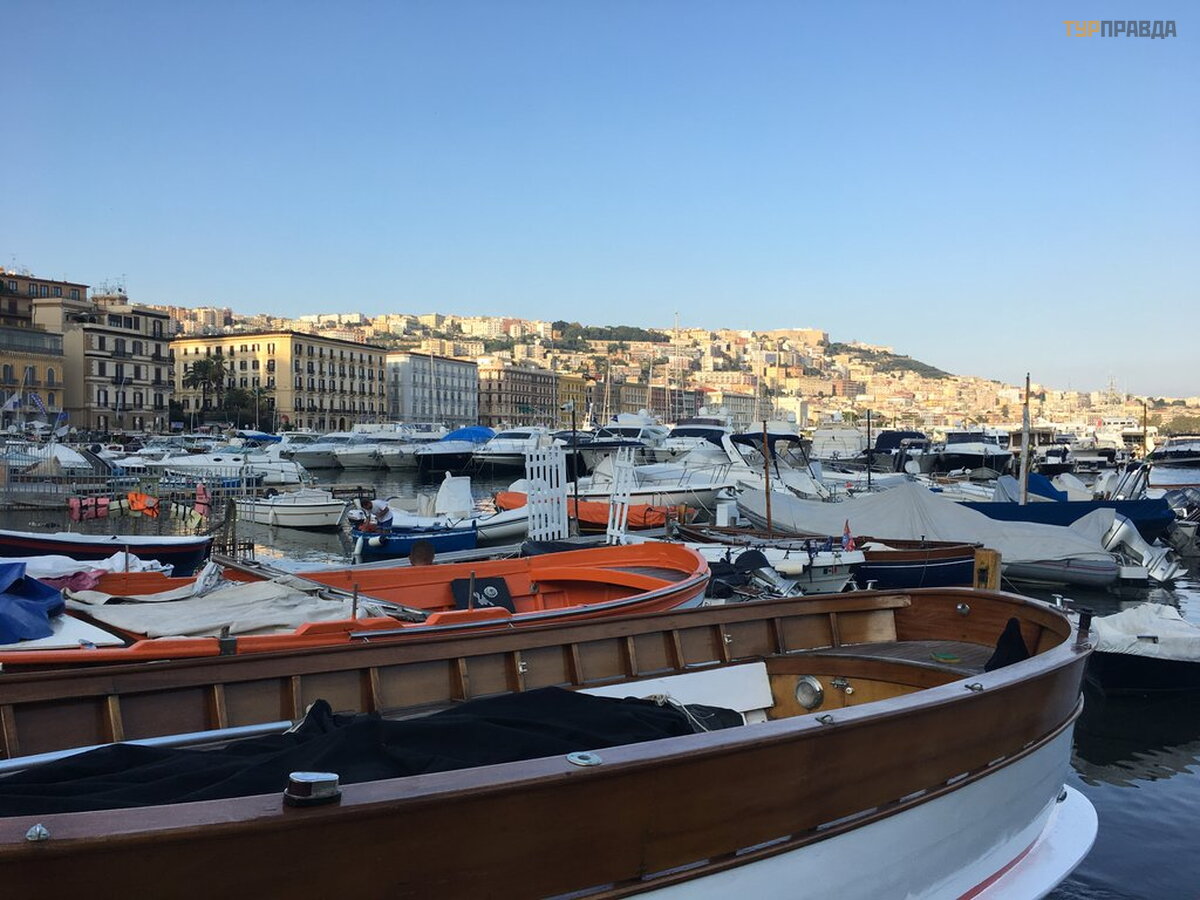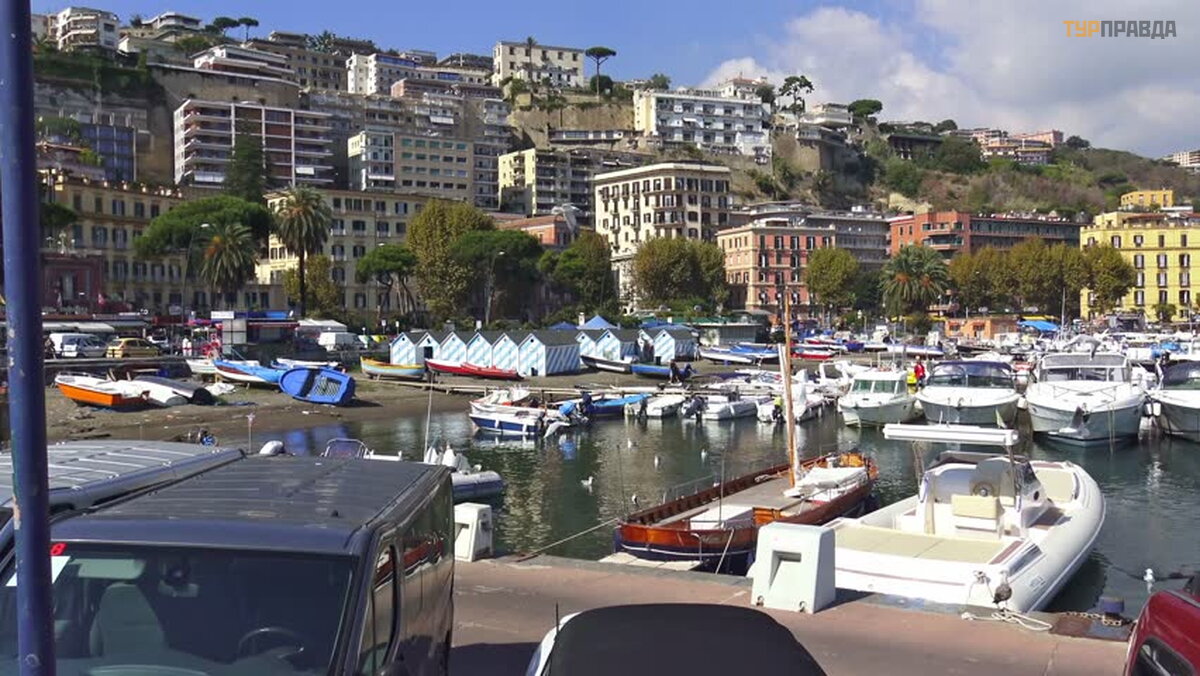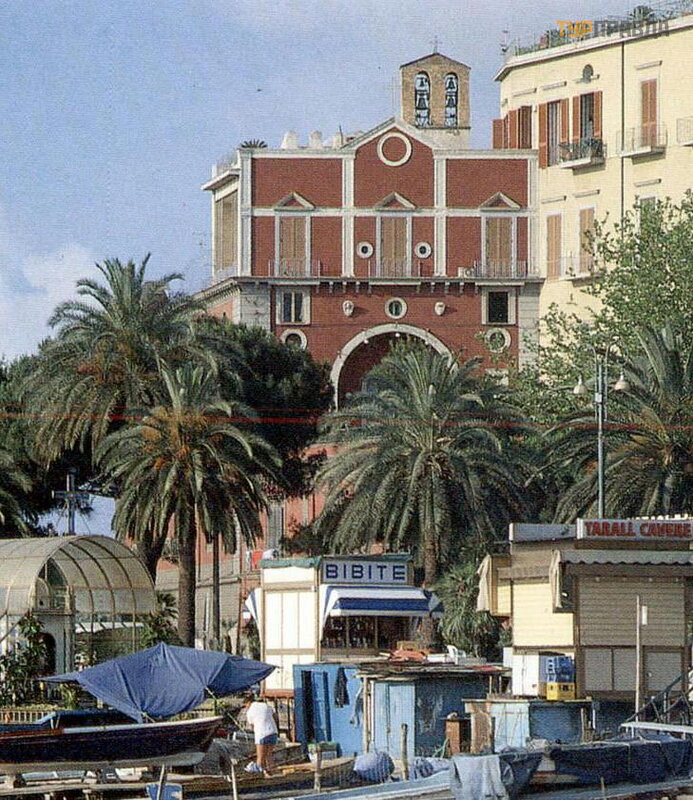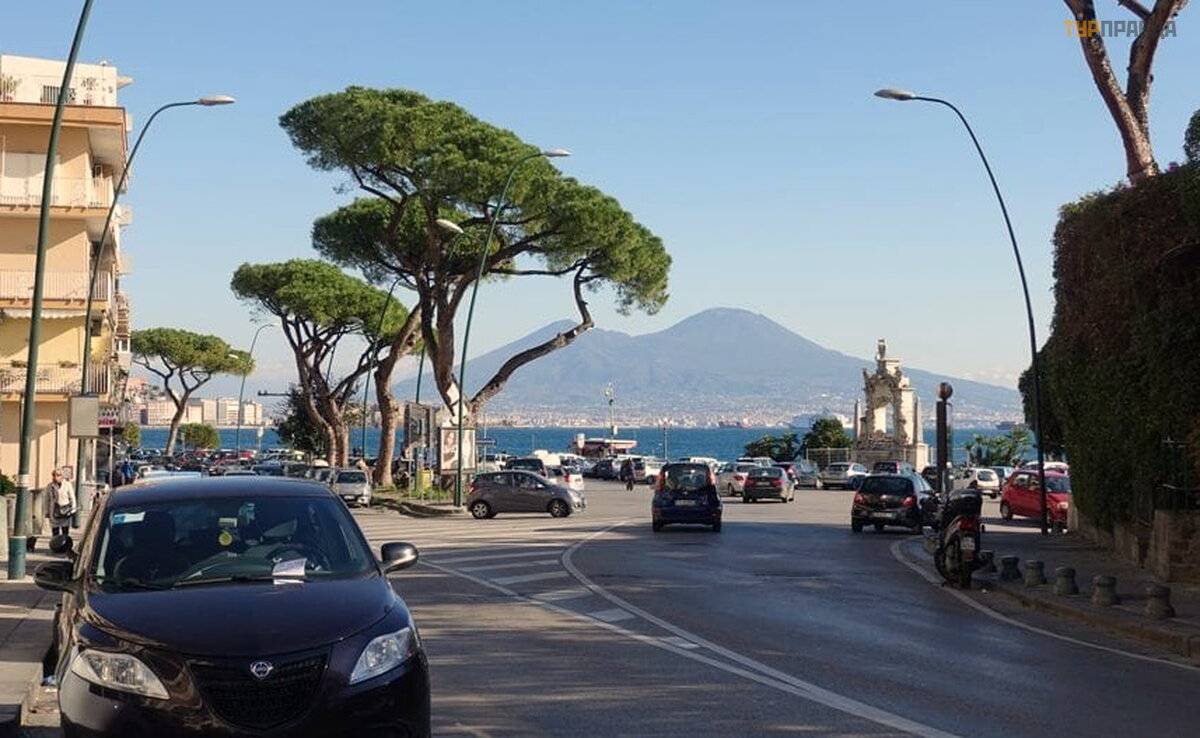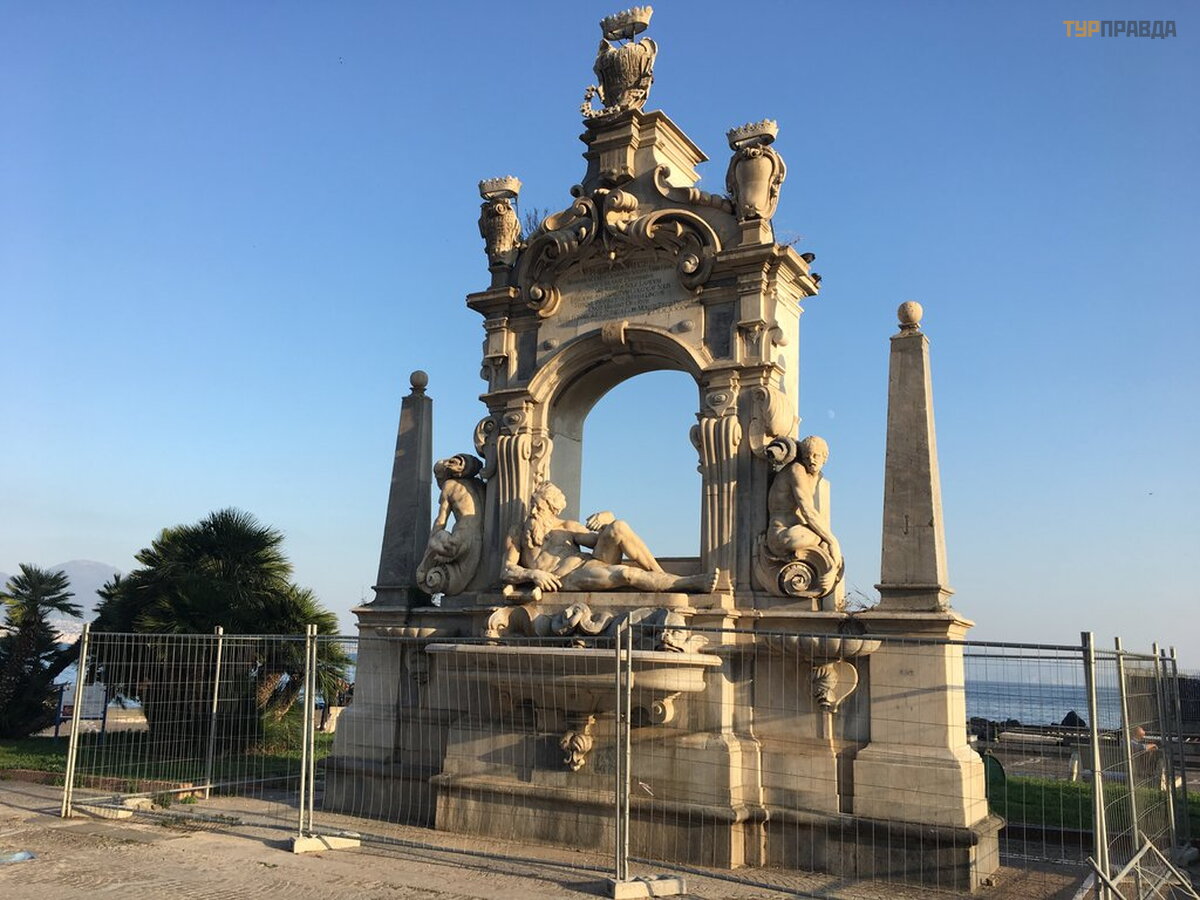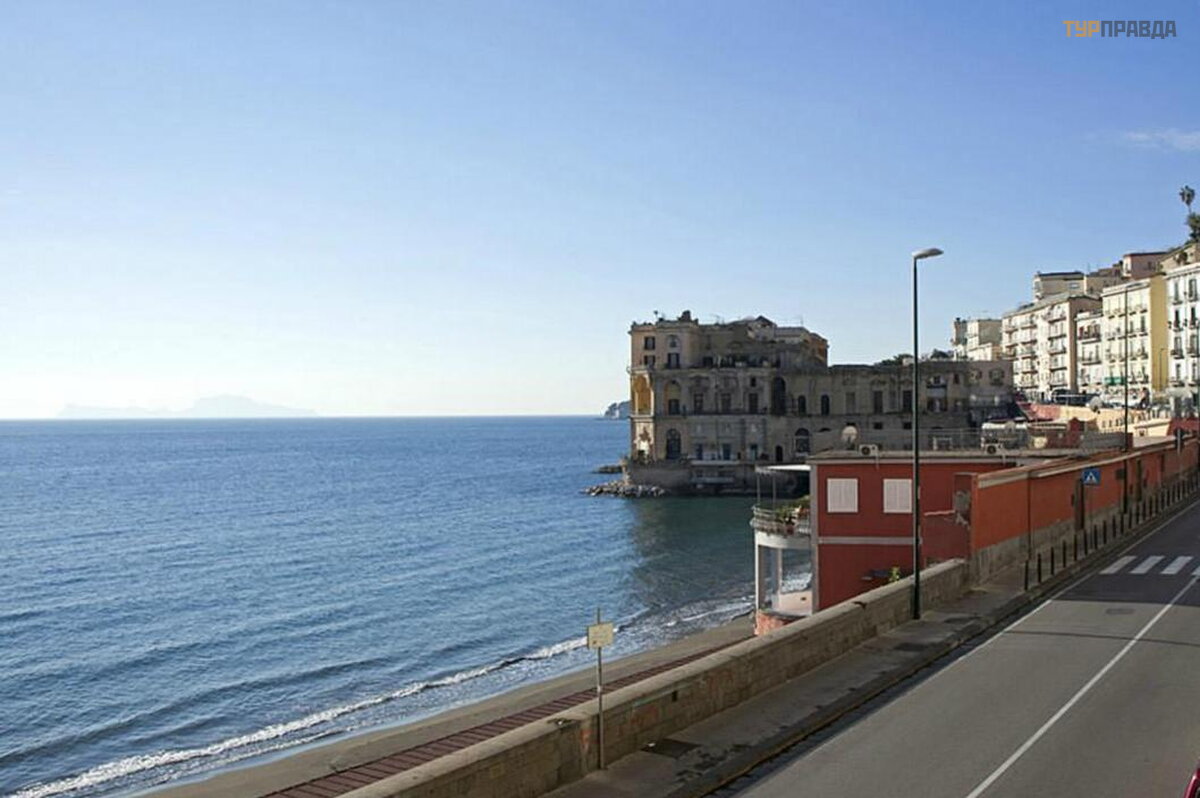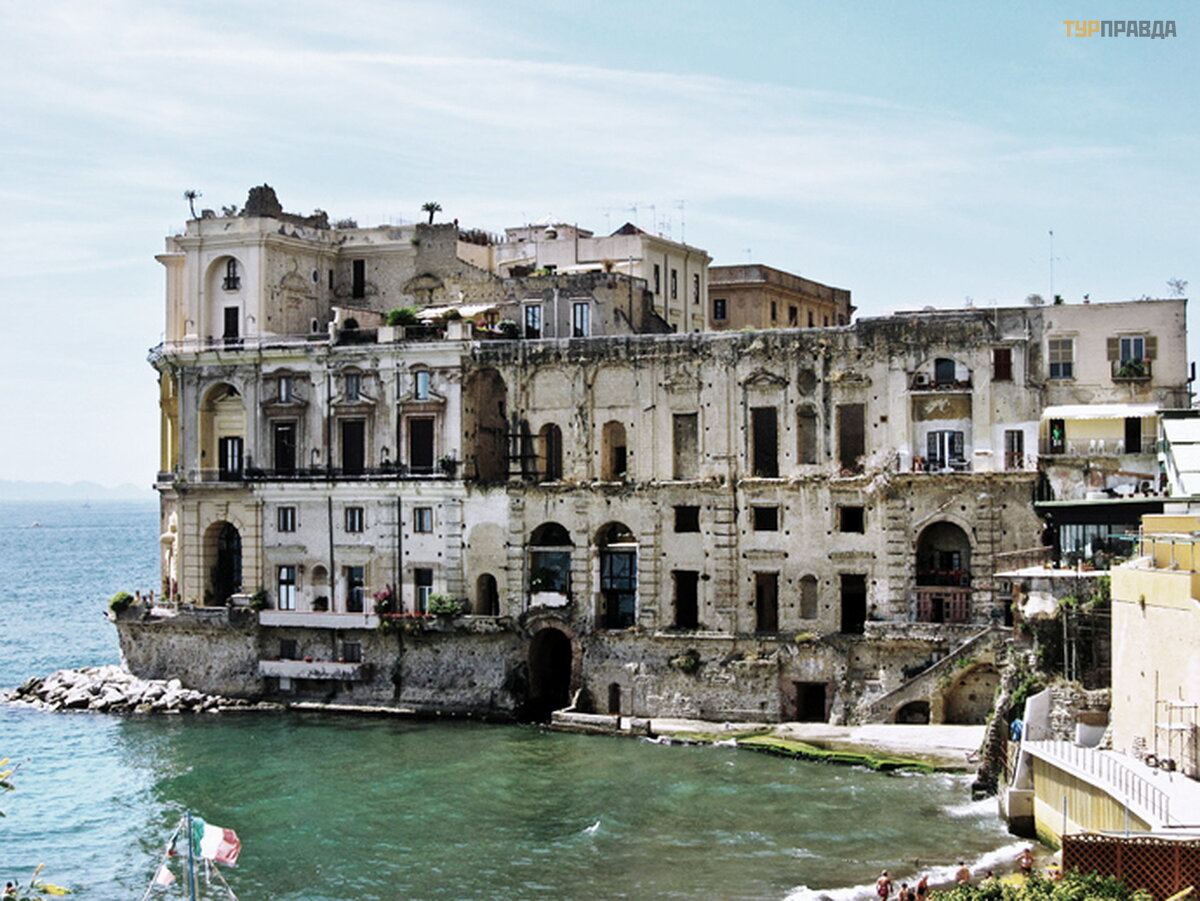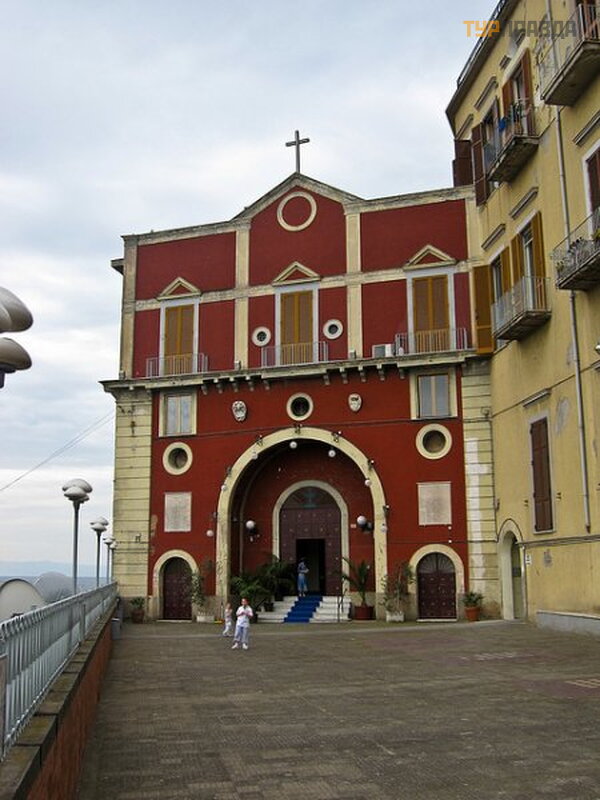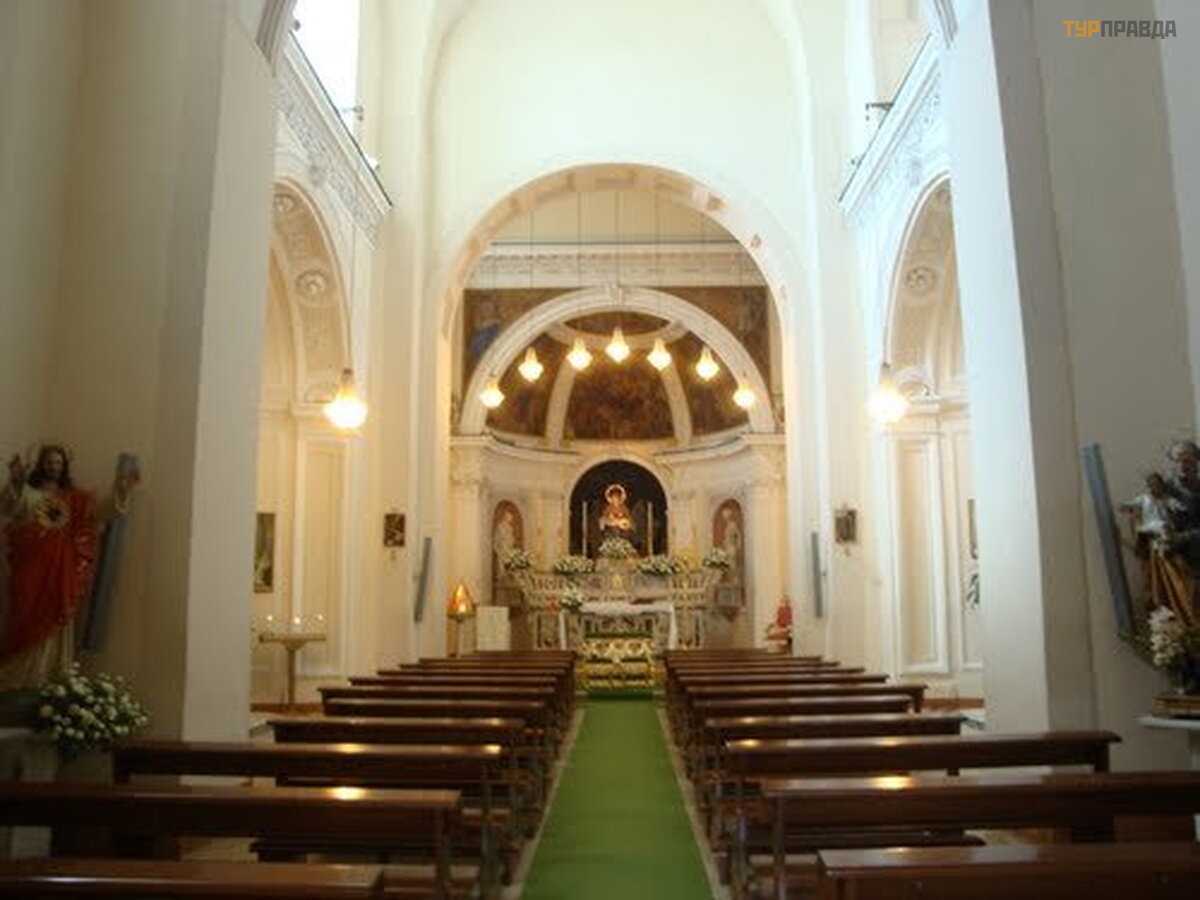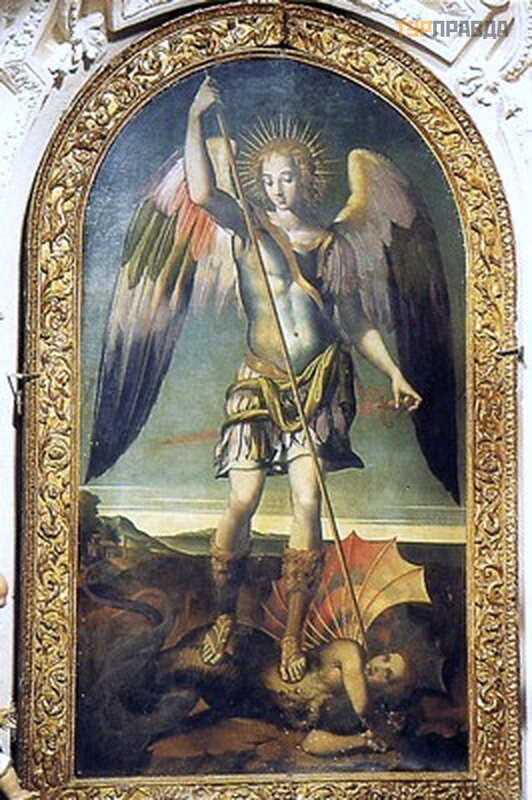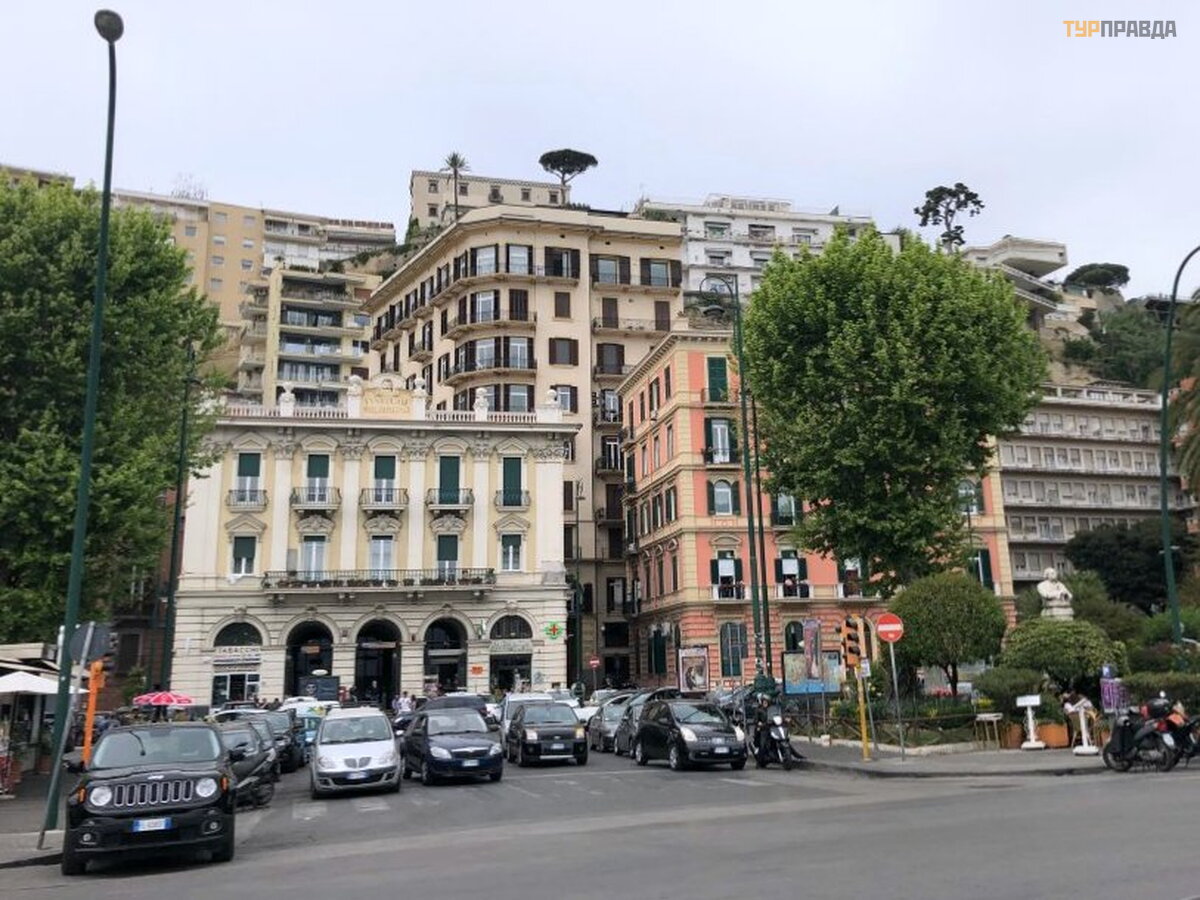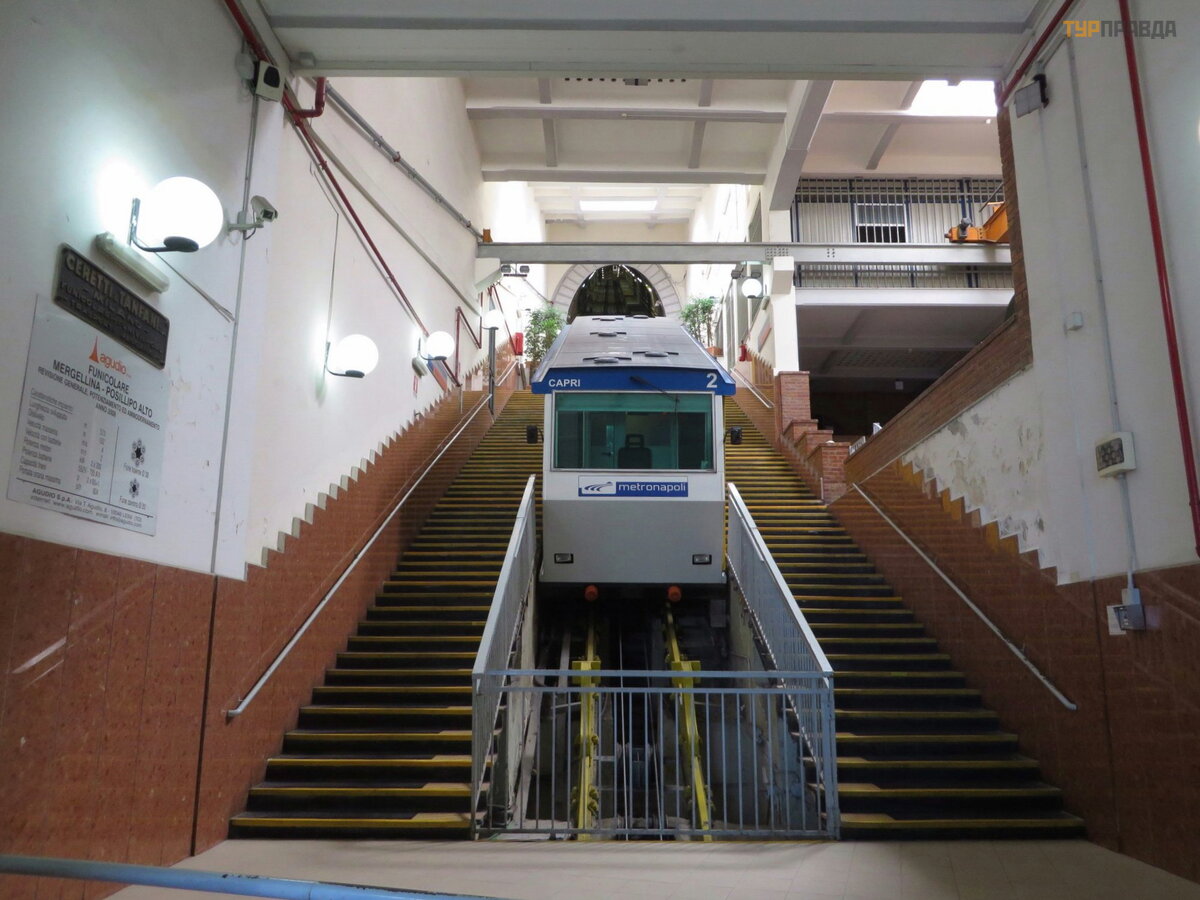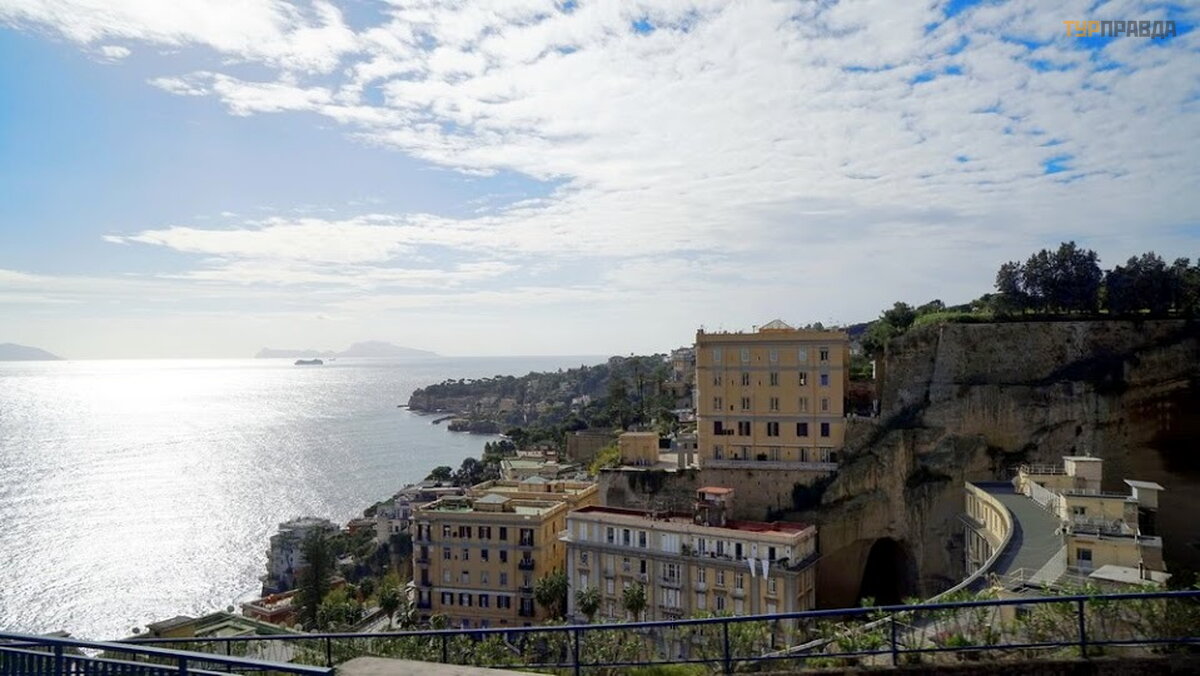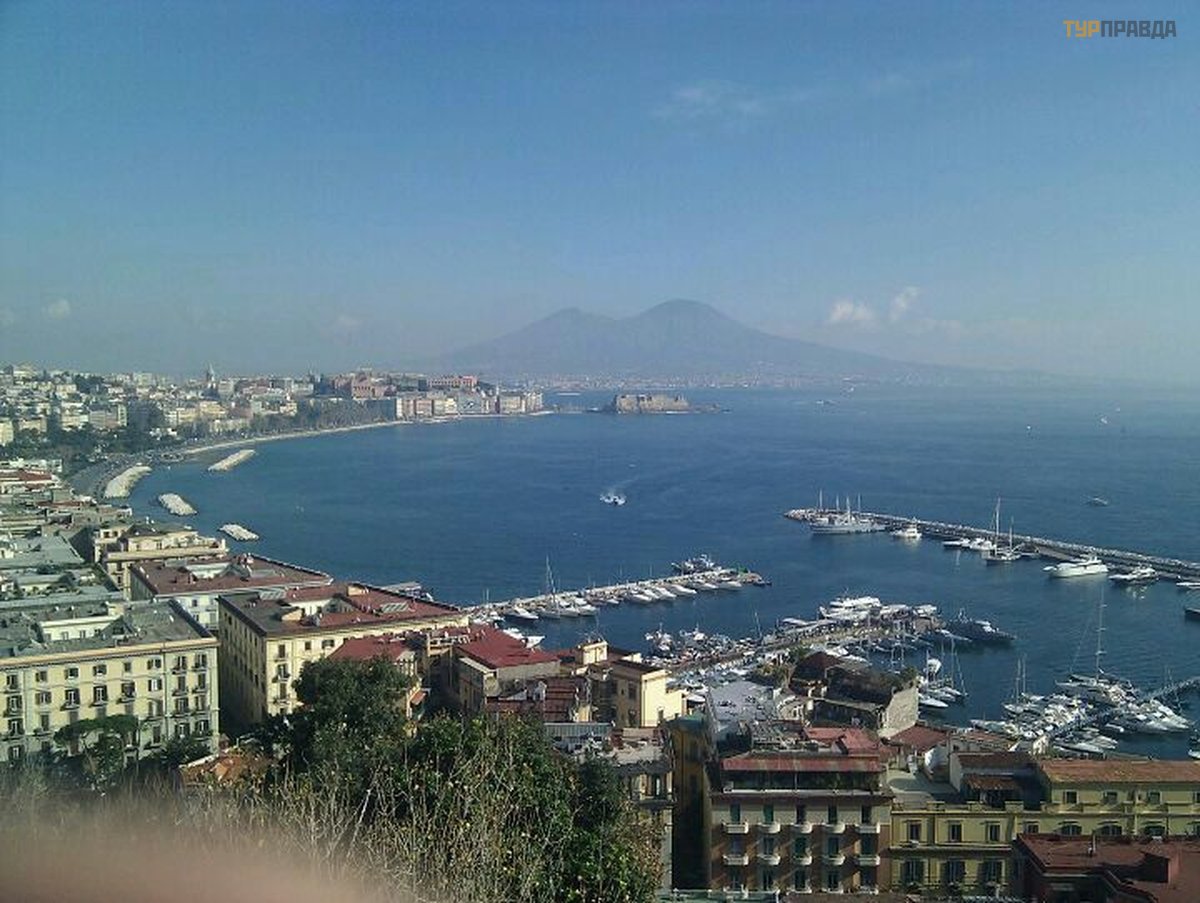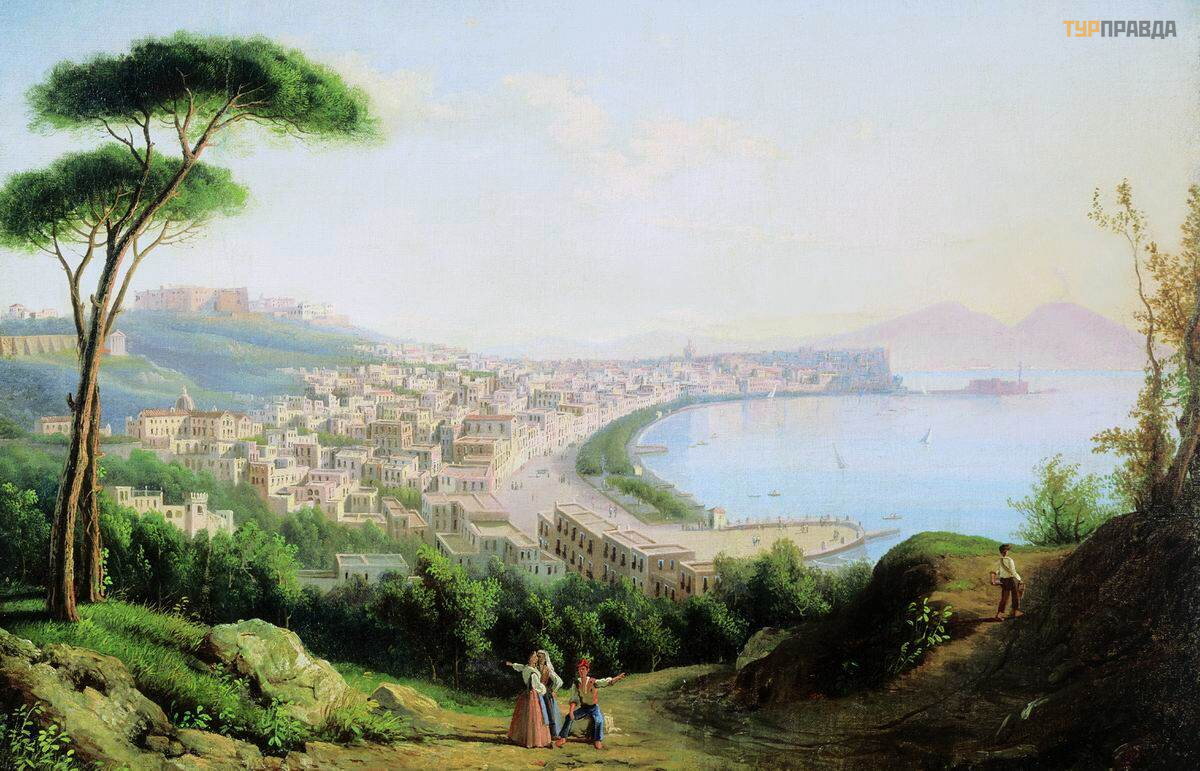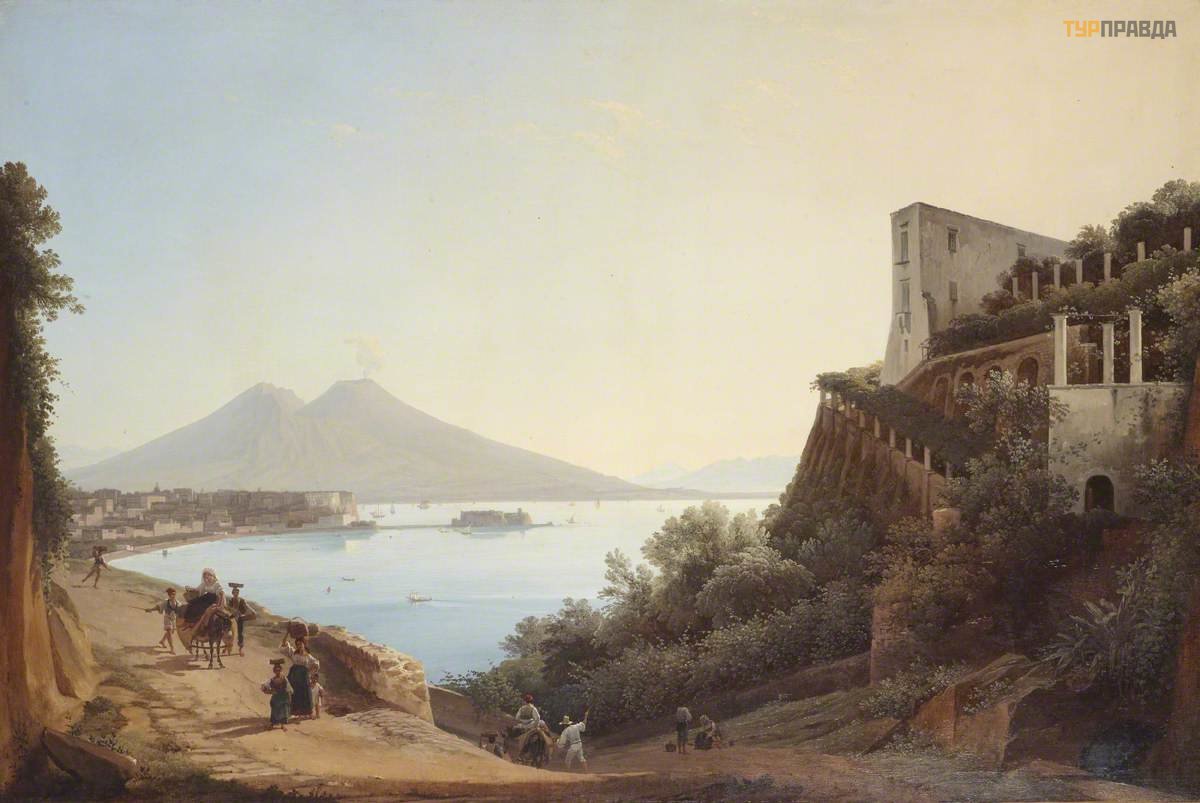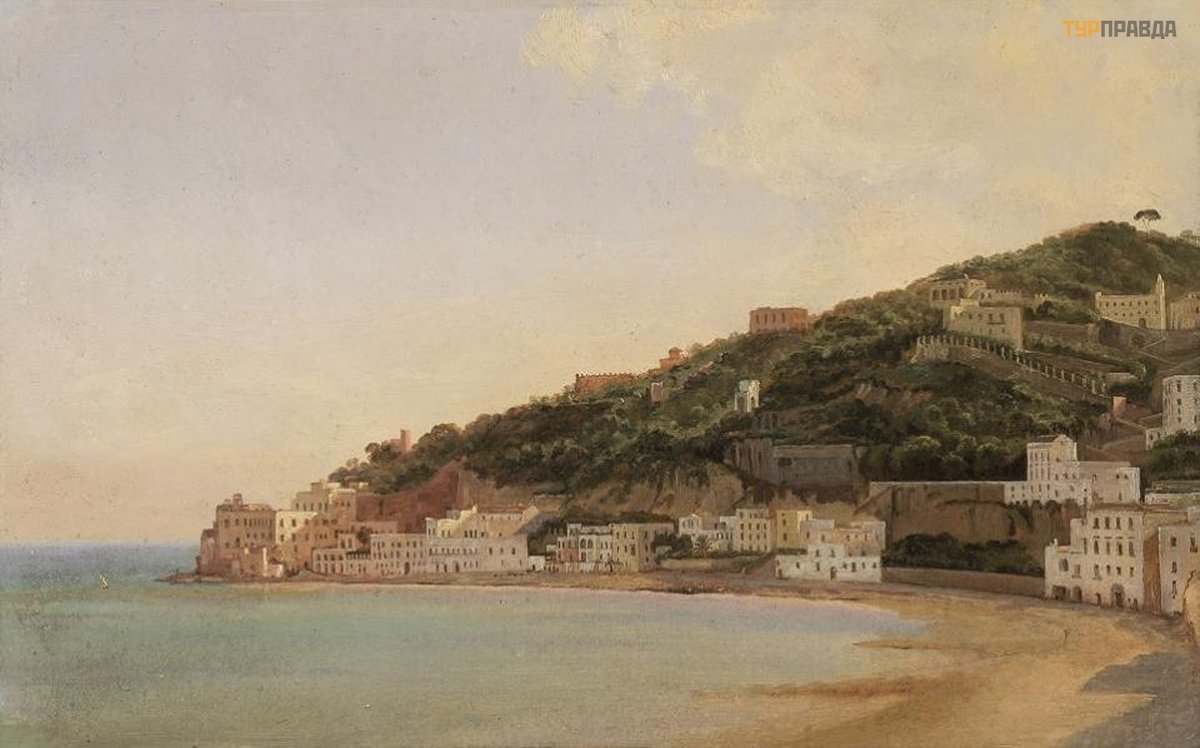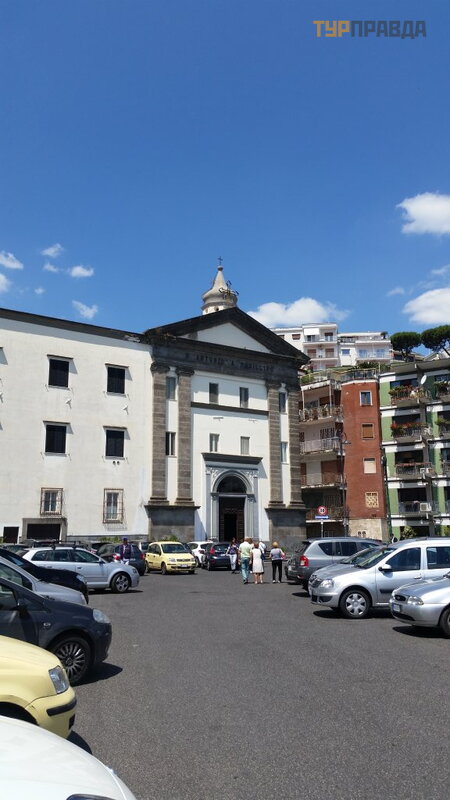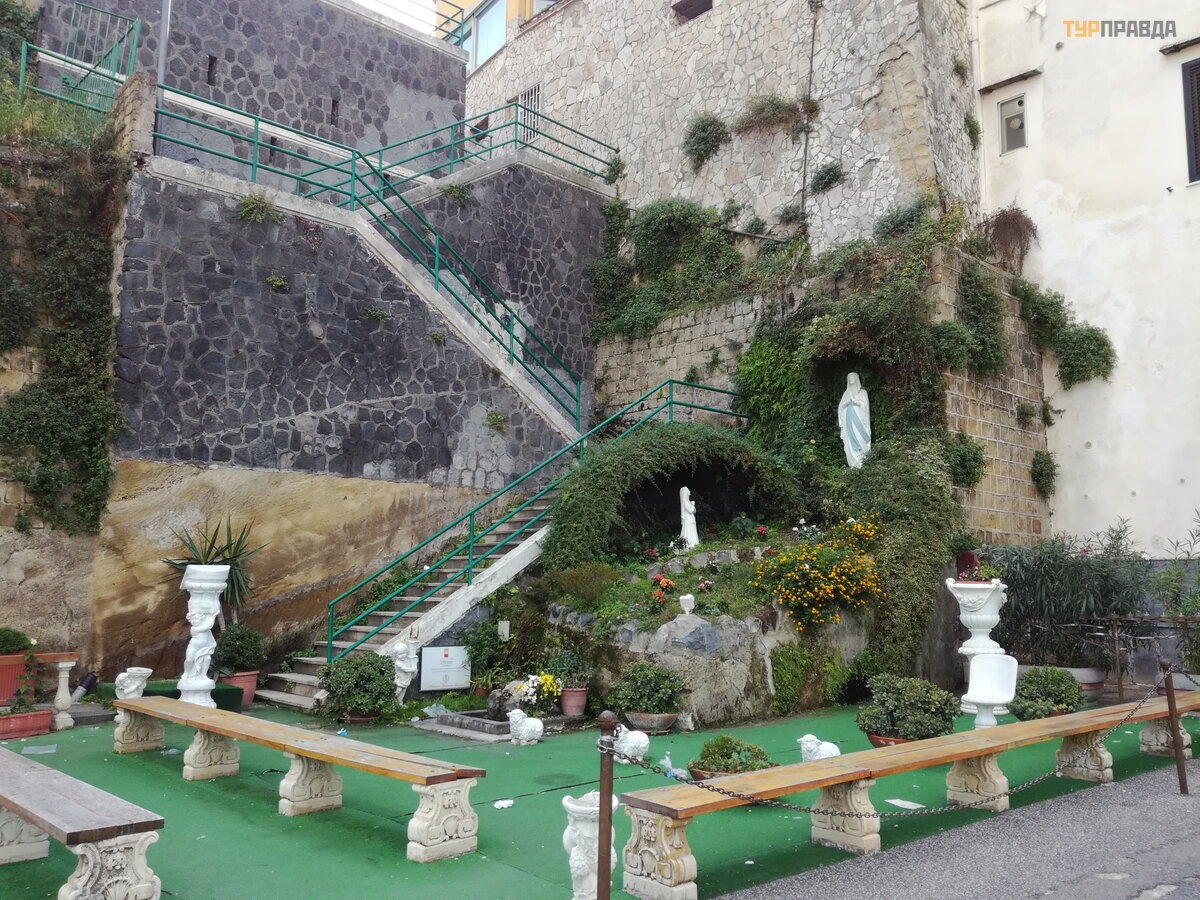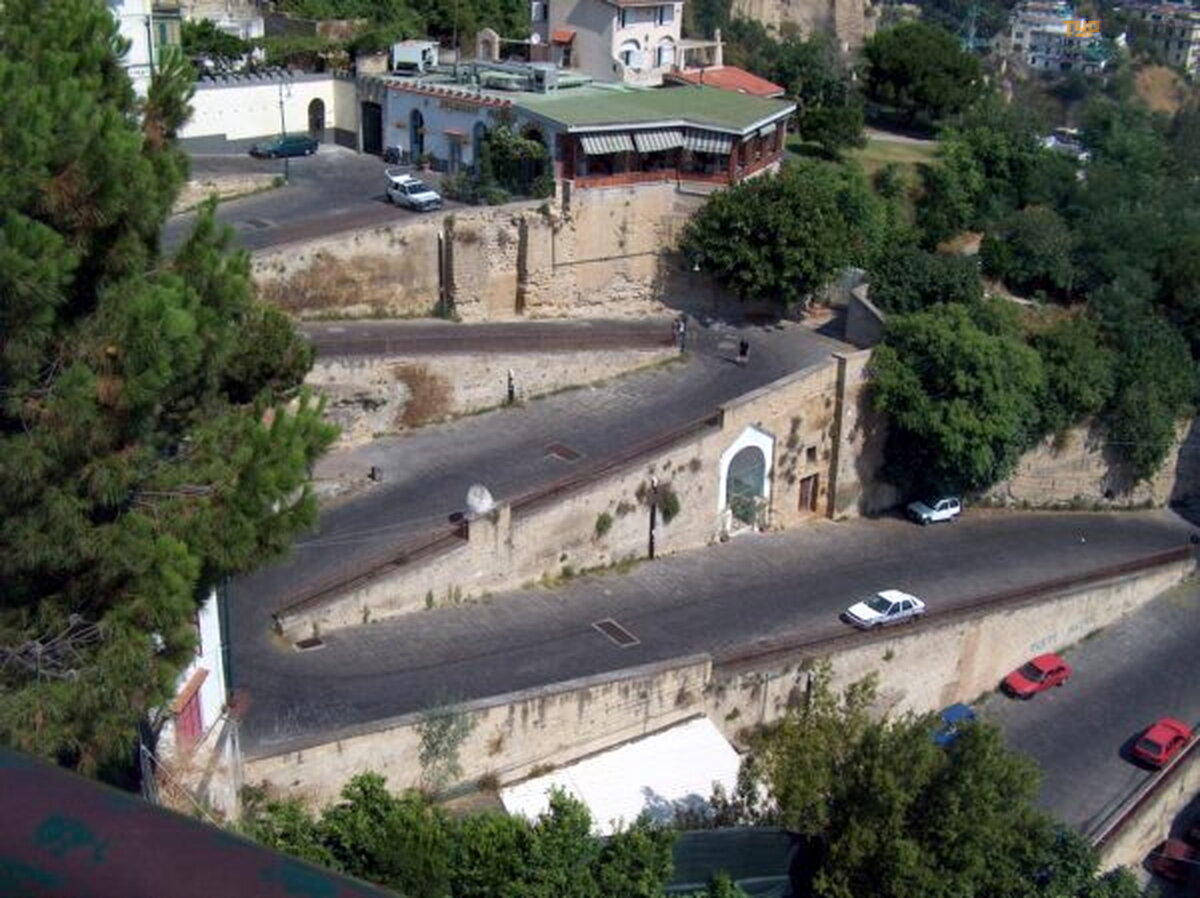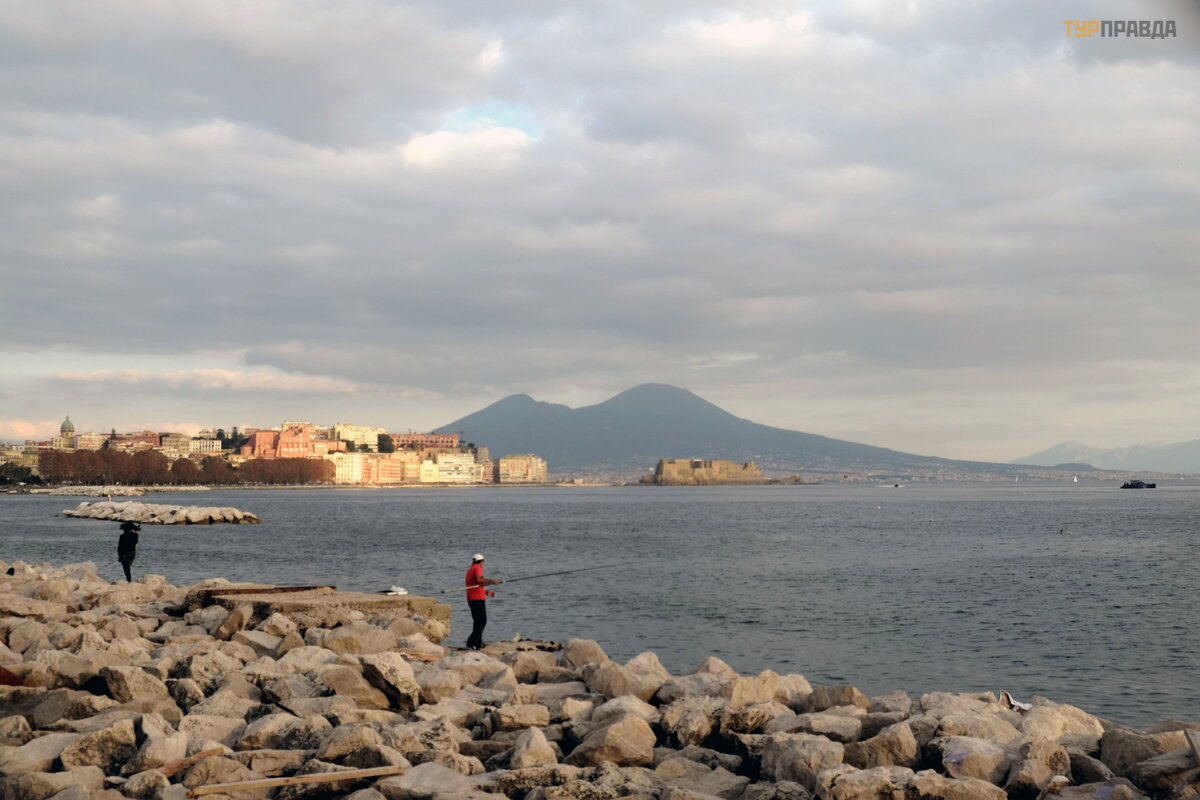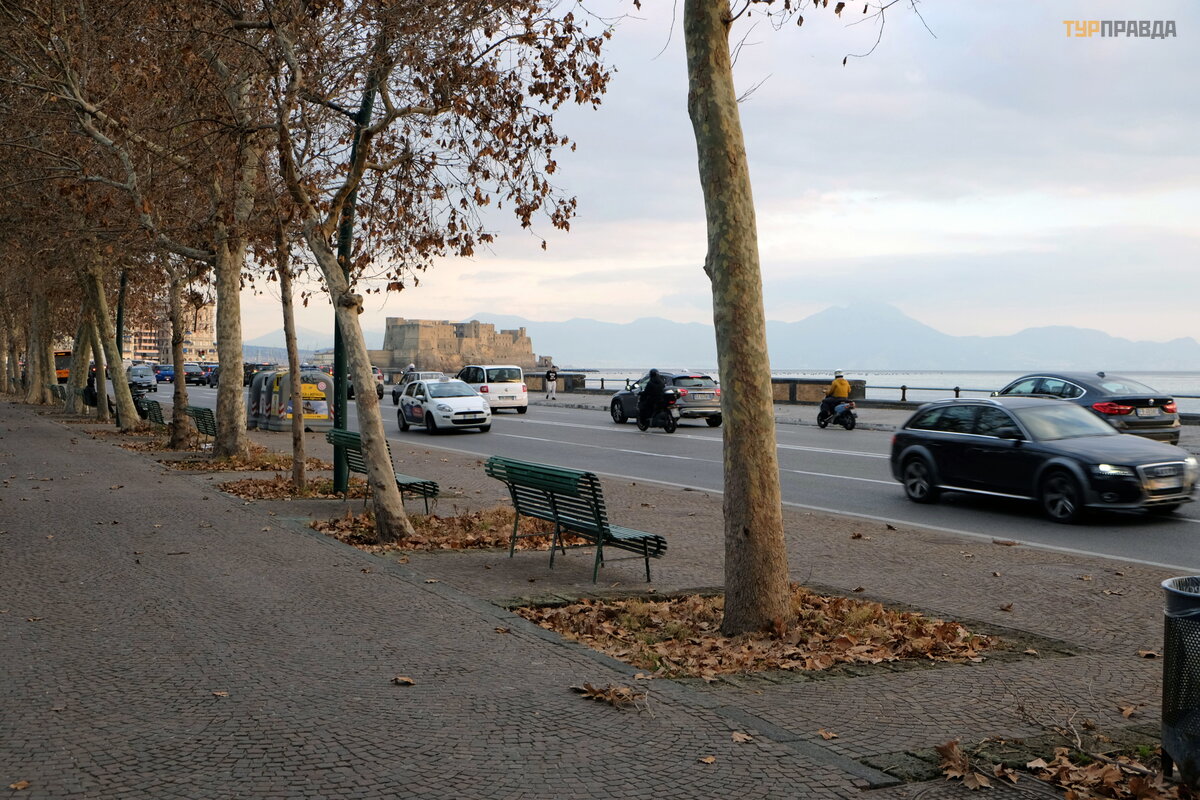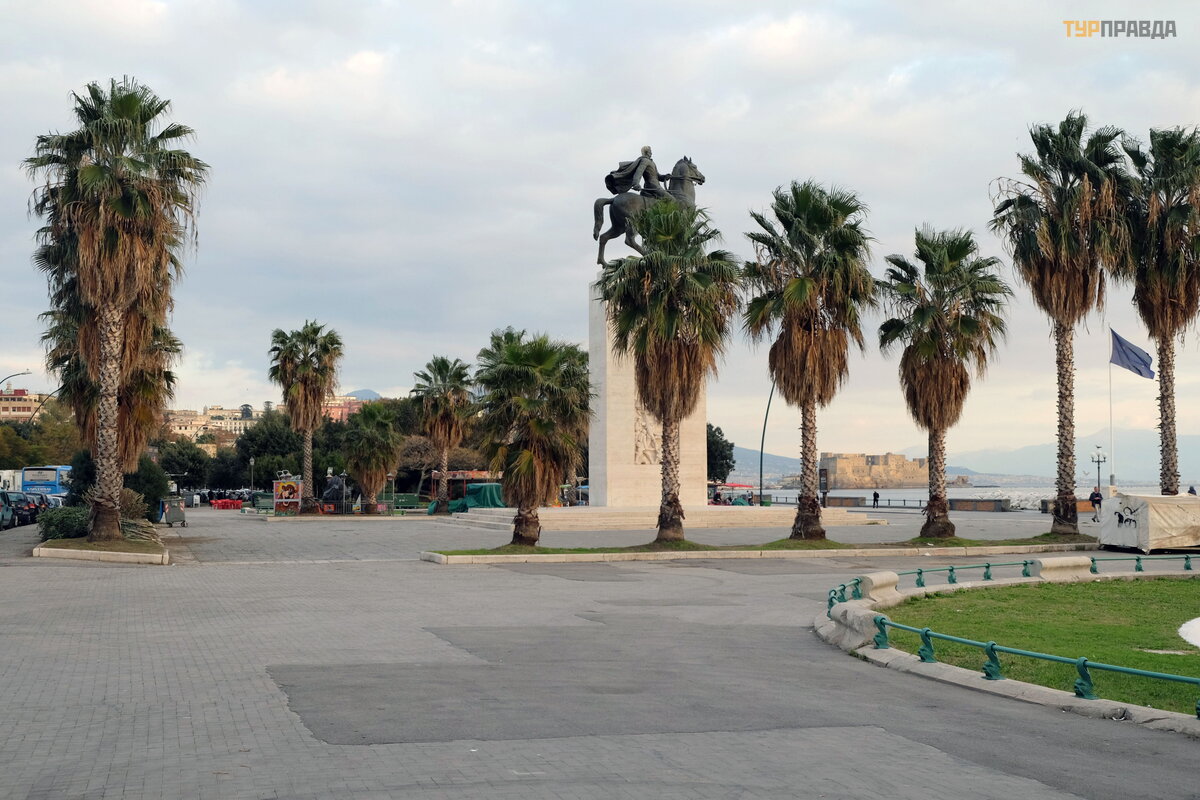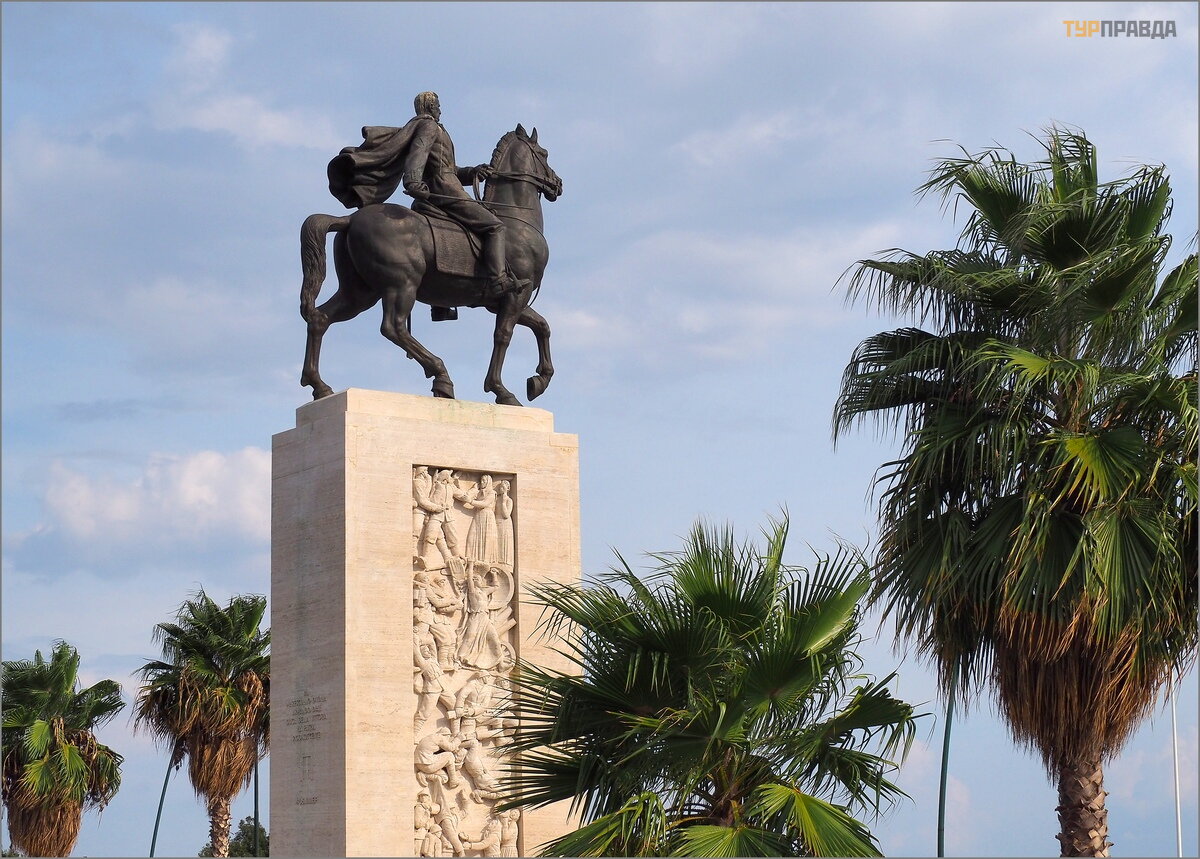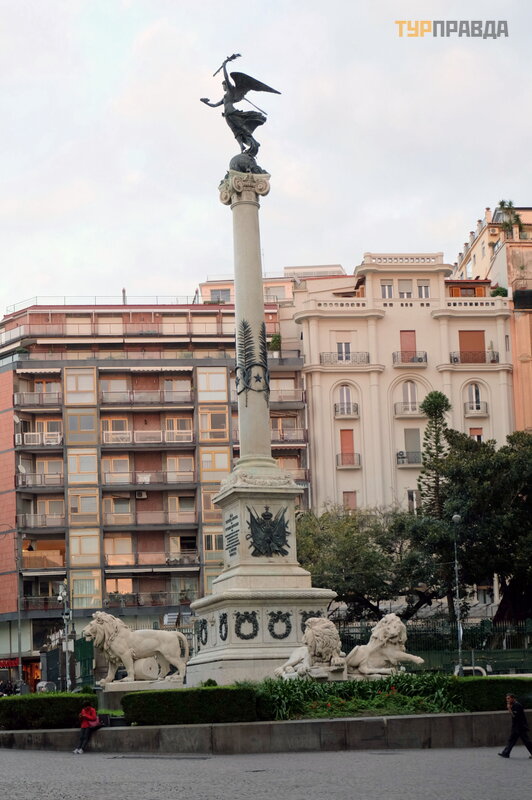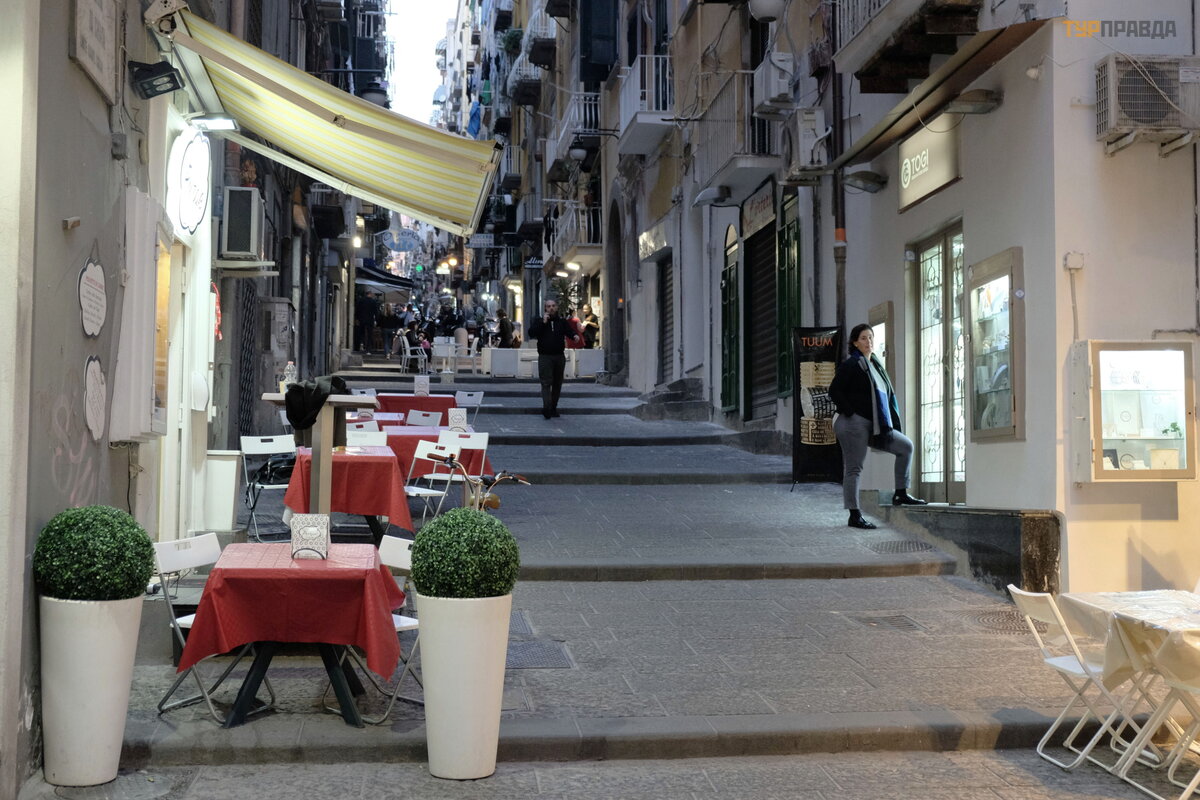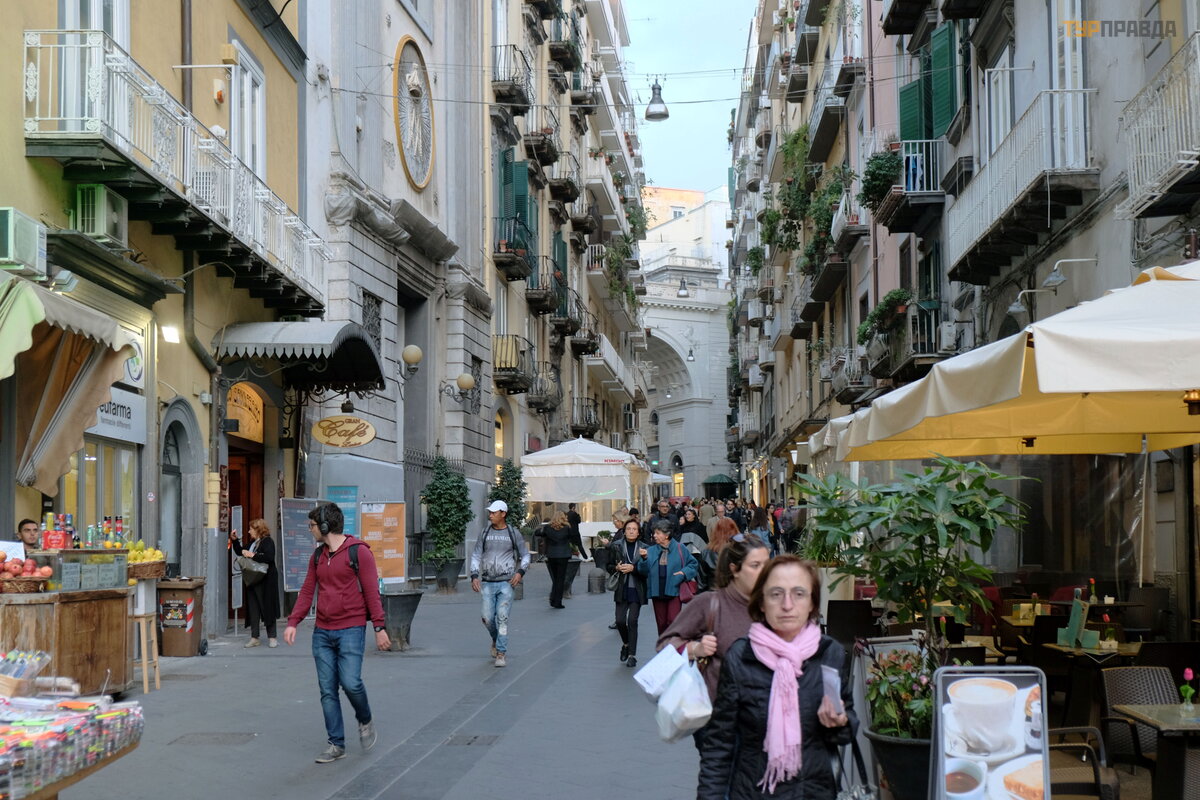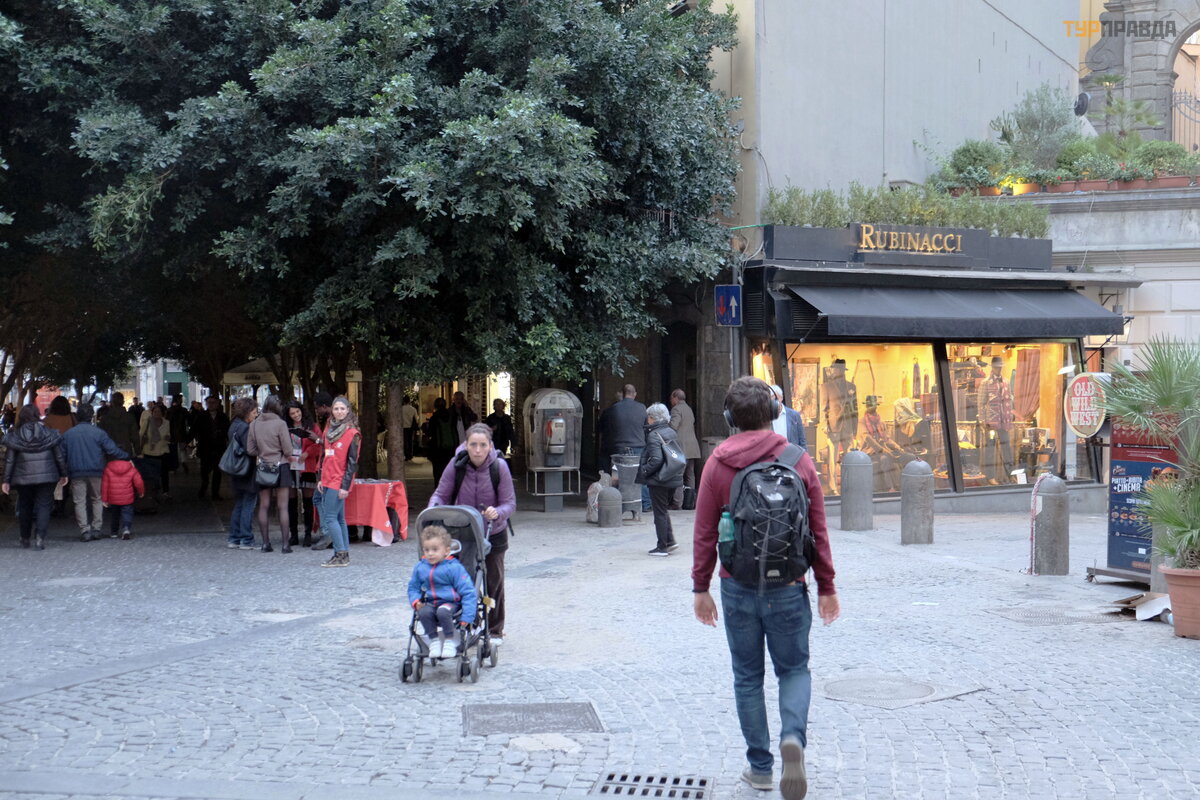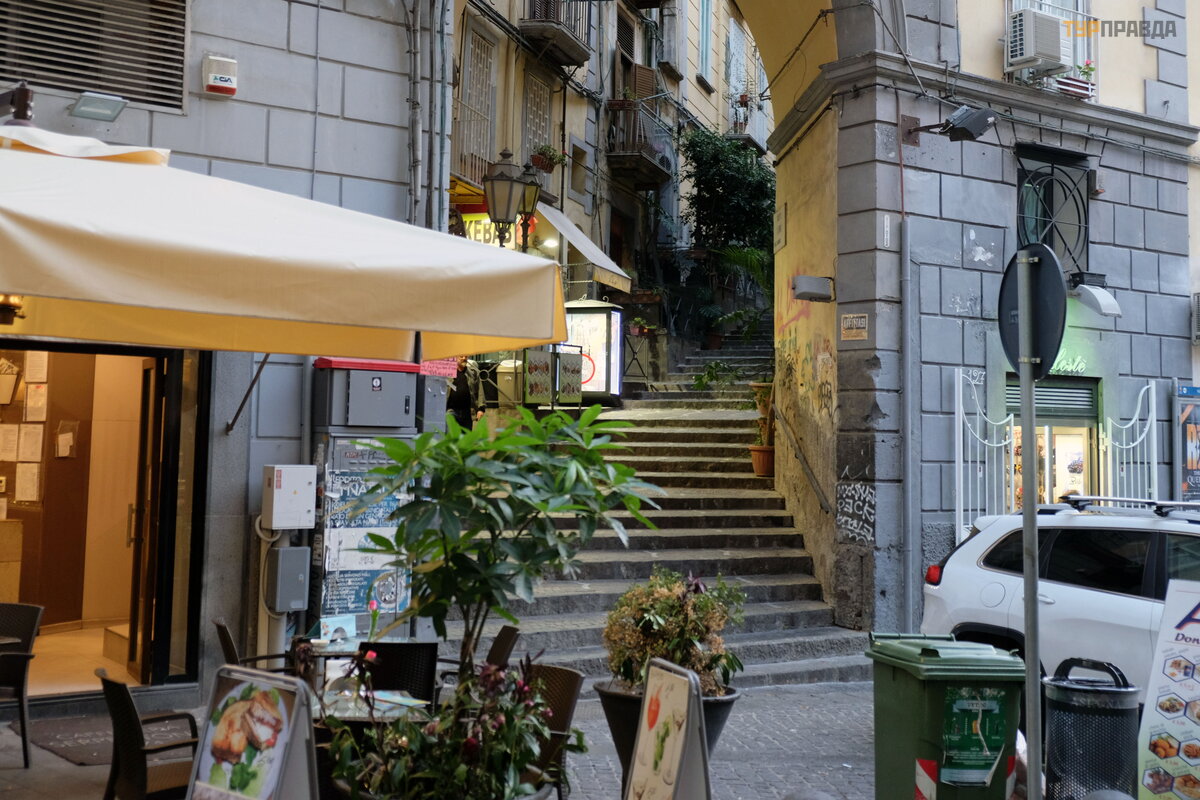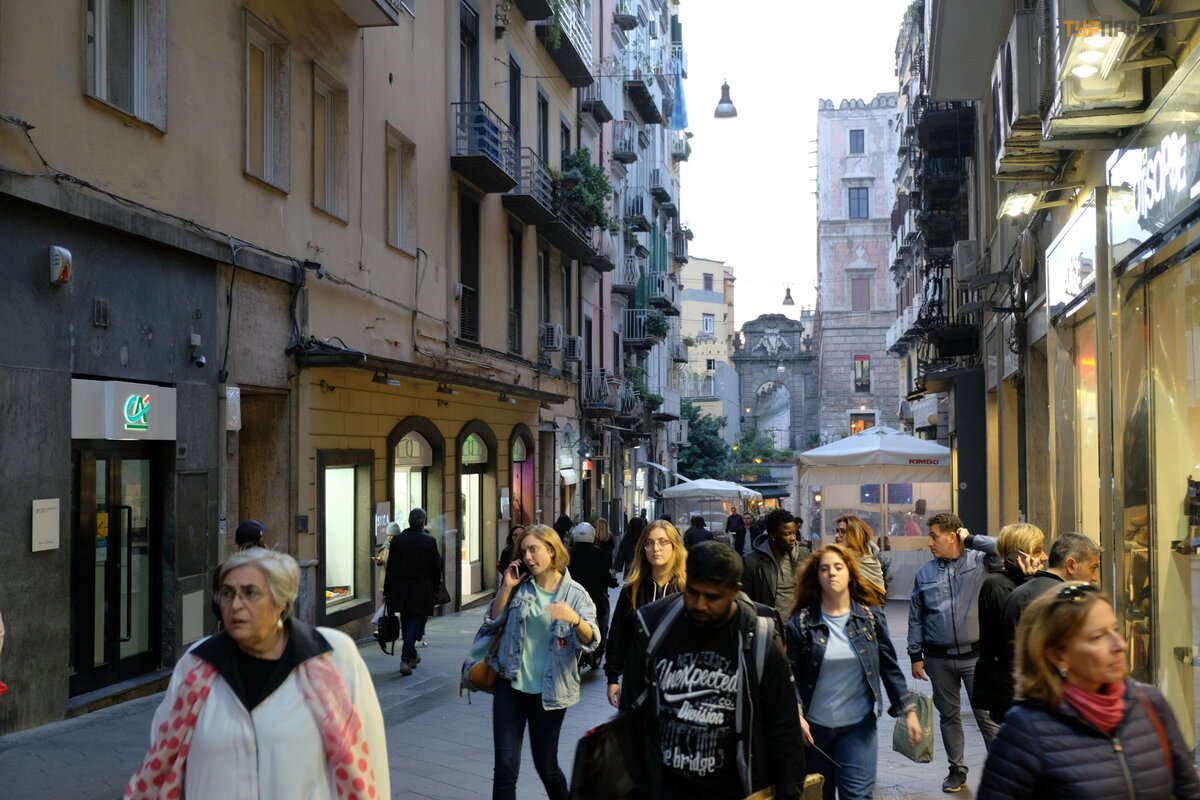My beautiful Naples. Part 6. Continued

Having descended by bus from the hill of Capodimonte, we again found ourselves in Piazza Dante. The building with a curved facade was designed by Vanvitelli (the author of the palace complex in Caserta) in the center there is a giant niche intended for the statue of King Charles III, but in honor of the unification of Italy it was renamed Piazza Dante.
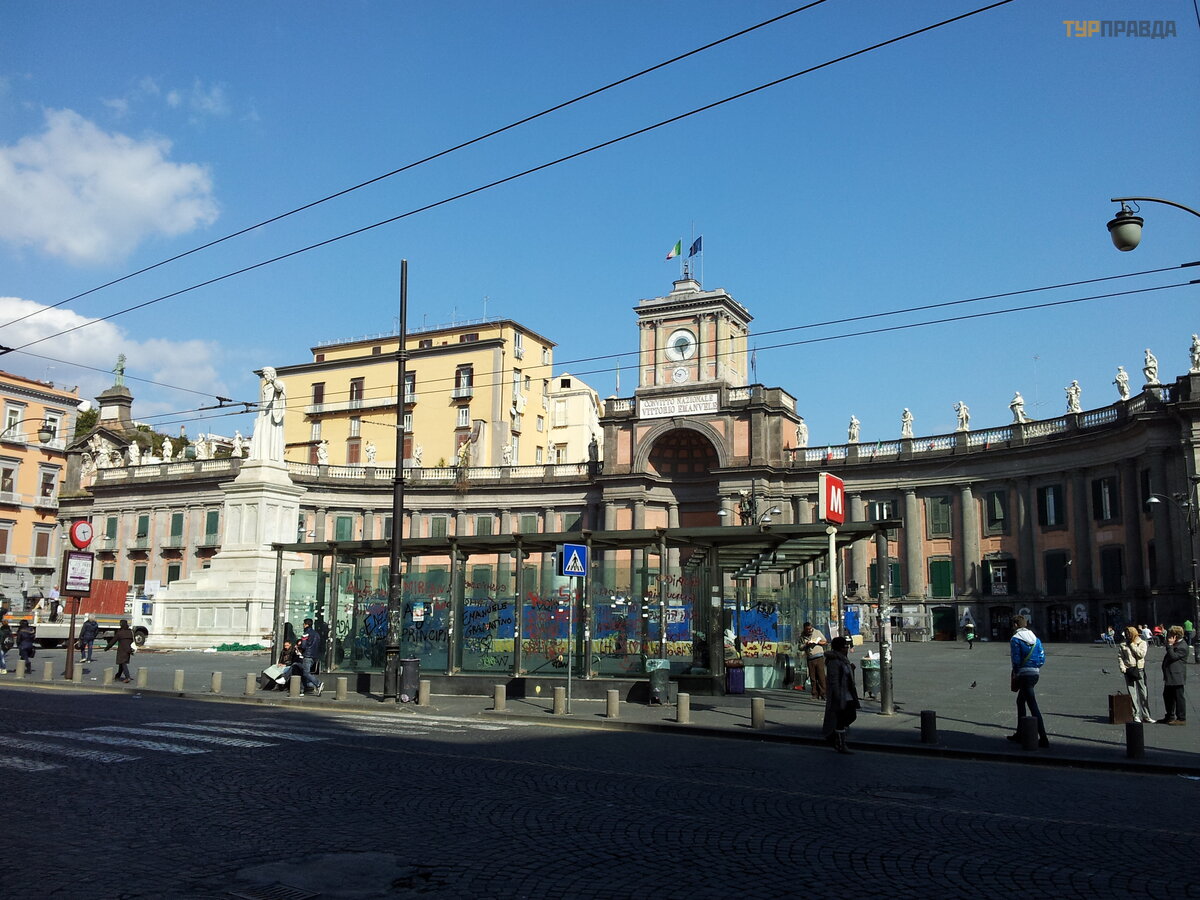 We boarded the metro and at the Museo station we changed to line 2 (this is essentially an electric train, on which you can get to Pozzuoli) and went to the most beautiful area of Naples Mergellina (the Neapolitans pronounce Margallina) in the Chiaia quarter. This area is located on the seafront, at the foot of the Posillipo hill. Famous for its beauty, it has been a source of inspiration for artists and poets for centuries.
We boarded the metro and at the Museo station we changed to line 2 (this is essentially an electric train, on which you can get to Pozzuoli) and went to the most beautiful area of Naples Mergellina (the Neapolitans pronounce Margallina) in the Chiaia quarter. This area is located on the seafront, at the foot of the Posillipo hill. Famous for its beauty, it has been a source of inspiration for artists and poets for centuries.
Napoli Mergellina railway station is one of the railway stations in Napaoli (also Central, Campi Flegrei and Montesanto), earlier long-distance trains also stopped there, but now the metro platforms of lines 2 and 6 remain.
Line 6 - only four stations, due to low workload, it works only on weekdays until 15-00. But now this line is being extended to Municipio station, which blocks many attractions.
Mergellin station building opened in 1925
First of all, we went to the park "Vergiliano a Piedigrotta" (Vergiliano a Piedigrotta), otherwise called the "Park of the grave of Virgil". the park is free, but from mid-October it is only open until 14-30,
The area in front of the hill is also called Piedigrotta, Piedigrotta is literally translated "At the foot of the grotto". Accordingly, the area behind the hill of Posilippo is called "Fuorigrotta" ("Beyond the Grotto").
In ancient times, noisy pagan holidays were held at this place, according to Petronius the Arbiter. In 1200, this place was consecrated and, in order to expel the pagan spirit from the cave, the church of Santa Maria di Piedigrotta was built. Consecrated in 1353.
The current neoclassical faç ade from 1853. Architect Enorico Alvino.
Gradually, the religious component of the holiday in honor of the Madonna lost its significance, and magnificent celebrations turned into real folk festivals, accompanied by the performance of folk songs. Now it is the oldest annual neopolitan song festival Festa di Piedigrotta, held on the Birthday of the Virgin on September 8th.
Next to the church, one of the road tunnels through Posilipo Salita della Grotta begins. The hill apparently consists of rather soft rocks, since many tunnels have been dug in it from ancient times to the present day.
The tunnel consists of separate sections and after passing a little through one of them we find ourselves in the "Park of Virgil at the Grotto". On the hill of Posillipo there is another Virgil Park "Vergiliano a Posillipo" already at the top of the hill.
Climbing up we get to the tomb of Virgil
Nearby is a tombstone of Virgil of the ancient Roman era. Unfortunately, the urn containing his ashes was lost in the Middle Ages. Virgil is to Italy what Homer is to Greece. Even during his lifetime, the author of the Aeneid was surrounded by legends that turned him into a kind of magician. He died en route from Greece, where he was collecting materials for the Aeneid, and bequeathed to be buried in Naples. By the way, he asked his friends to burn the unfinished "Aeneid", which, fortunately for us, they did not do.
Nearby is another tomb of the classic of Italian literature, the poet Giacomo Leopardi (1798 - 1837), who spent his last years in Naples. .
Below, to the left of Leopardi's tomb, is the Old Grotto or "Crypt of Neapolitana", from which the name of the park comes. According to medieval legend, the tunnel was built by Virgil in one night. Although in fact this transport tunnel was built in the 1st century BC by the architect Lucius Coccius Auctus on the orders of the Roman emperor Octavian during the civil war with Pompey in 37 AD. e. . A native of Greece, Coctius was an outstanding Roman architect, the author of the tunnels in Pozzuoli and Cuma, according to the documents, the tunnel (length 711 m, height 4.6-5.2 m, width 4.5 m, 2 vertical ventilation shafts) he built simply at an unprecedented pace, though not in one night, but in fifteen days! employed 23 thousand people.
The grotto was damaged during World War II and is now closed.
Some historians believe that Coccius had a hand in the creation of the Roman Pantheon (documents about the author of this masterpiece of architecture have not been preserved). A similar dome was created by Coccius in Bailly. On Posilippo, Coccius also built the Grotto of Seiano (Grotta di Seiano, Grotta di Posillipo), 780 m long, 4.0 ÷.6. 5 m wide, 5.0 ÷.8. 0 high, three ventilation shafts. The grotto is very well preserved and leads to the Pausilypon Archaeological Park. Guided tours, but only group tours, you must sign up in advance. Here is a photo from the Internet
Going back down, we reached Piazza Sannazaro, another car tunnel is visible
In the center of the square there is a fountain "Naiad" or "Mermaid". According to legend, this is the siren that Odysseus, who sailed by, managed to deceive.
He managed to hear her alluring singing (the rowers tied him up and filled his ears with wax) and the siren jumped ashore.
The famous pizzeria "50 Kalò di Ciro Salvo" is located on the square, considered by many guides to be the best in the world.
In addition to pizza, you can order other dishes and wine. There were few people, I ordered a traditional Margarita,
and the wife is something heaped up
What to say? The quality is excellent, but the price tag is higher than in "Da Michele". The price of "Margarita" is 6-50, her wife's pizza is 9, they took 3 euros for beer + surcharge for service of 2 euros per person. The total price tag is 24 euros (in "Da Michele" there were 14).
Having quenched our hunger, we decided to take the funicular up to the observation deck. On the way we passed the semicircular Piazza Leone, named after the 18th century Lion Fountain.
Only the fountain was without water.
We went to the embankment. From the port, ferries and boats also go to Capri and Ischia. And in the morning, fishermen arrive with a fresh catch. Via Francesco Carracciolo runs along the sea, named after the admiral of the Neapolitans, who successfully fought against Nelsson, but was captured and hanged by Nelsson's order after signing the surrender, despite the fact that the court sentenced him only to imprisonment. The British have always been treacherous!
You can walk along the pier towards the sea and take pictures
We walked along the promenade past the Church of Santa Maria del Parto, which is located on Via Mergellina, which goes just above the sea
At the confluence of Mergellina and Carracciolo streets is the Sebeto fountain, created in 1635 by the father and son of Fanzago. The Sebeto River flowed through Naples as early as the 5th century AD. e. but then it dried up. The figure of an old man, symbolizing the Sebeto River, is similar to the figures on the Roman Capitol. Now the fountain is being restored.
Further on, the long Via Posilippo begins, going to the other side of the hill. We walked a little along it and with one eye looked from the embankment at the palace of Donna Anna (Palazzo Donn'Anna), wife of the Spanish Duke and Viceroy Ramiro Nunez de Guzman . . The palace was built by the famous architect Cosimo Fanzago (which for Naples means like Rastrelli for Peter, or Bernini for Rome) or, however, the palace remained unfinished after Anna's death in 1644 (there were rumors that she mysteriously disappeared due to her husband's betrayal).
Then the palace suffered from robberies and an earthquake, part of the facade was destroyed to expand the Posillipo street. The owners of the palace changed regularly. In the 19th century, it housed a crystal factory, rented out rooms, and operated a bank branch.
An interesting fact is that today the palace is not a museum center, but is used as a private residential building, divided into several apartments.
Before the palace and behind it there are beaches, there are private ones that are quite expensive. In general, in Naples, because of the embankment, you can’t comfortably buy. Or people swim from the stones of the embankments or go to the Sorrento or Pozzuoli area. We decided not to go to the other side of the hill this time, to leave it for the next trips.
From the castle we went back towards the funicular.
On the way, the Konad supermarket materialized very opportunely, where we took a bottle of wine and a snack (Mortadella sausage and cheese)
We went to the church of Santa Maria del Parto
The church was built in 1497 by order of the poet Jacopo Sannazaro on land granted to him by King Frederick of Aragon. The construction was completed shortly before the death of the poet in 1530, his tomb is located behind the altar.
The painting by Leonardo da Pistoia "The Archangel Michael Slaying the Devil" is of particular interest to everyone - more often under the title "The Devil from Mergellina". According to legend, a local beauty was depicted as the devil, trying to seduce the impregnable Bishop Diomedes Carafa.
The painting has the inscription “Fecit victoriam alleluia 1542 Carafa” - “Carafa won, alleluia 1542” The Neapolitans still have a saying: “You are beautiful and vile, like the devil of Mergellina”
We climbed to the observation deck of the hill with the help of a funicular with the same name "Mergellina". There are four funiculars in Naples, three of them converge in the Vanvitelli metro area, that is, you can go from one to another. "Mergellina" lifts only on Posilipo. The interval of movement is 15 minutes.
The building of the funicular in a bright three-story building.
In general, the Neapolitans met with distrust the first funicular to Vesuvius, built in 1880. In order to attract the townspeople, then the authorities announced a competition for the best song about him.
Composer Luigi Denza and journalist Giuseppe Turku brilliantly won the victory by composing the immortal hit "Funicular Funicular", and the owners of the funicular began to receive gigantic profits, because after such advertising the people rushed to them irresistibly.
That first funicular was destroyed during another eruption of Vesuvius in 1906, and the song gained wild popularity. It was arranged for orchestra by Rimsky-Korsakov, Richard Strauss, and Schoenberg. Whoever sang it, including the legendary trio of tenors Pavarotti-Domingo-Carreras.
"Let's go, let's go, let's go there.
There's a funicular, there's a funicular... "
On the line of the funicular "Mergellina" stop four, to the observation deck "Belvedere Sant'Antonio" exit to the second "Sant'Antonio". There are several observation platforms on the hill, but you need to climb to them from different sides.
The views are amazing, of course! This is the view towards Pozzuoli.
And this is a view of Vesuvius. It's time for a glass of wine.
It is interesting to compare the views of Posilippo at the beginning of the 19th century by the Russian artist Sylvester Shchedrin and the German Franz Catel, who created many landscapes in Italy and were buried there (Katel in Rome, and Shchedrin in Sorrento)
Nearby is the Chiesa di Sant'Antonio a Posillipo church, named after St. Anthony of Padua, built in 1642. An interesting name of the street on which the church stands: "Street of Happy Minutes".
There is a square with a grotto under the church
A year later, Viceroy Ramiro de Guzman built a road for pilgrims, the so-called. "Thirteen Descents of San Antonio".
They wanted to go down it, but they thought that after drinking wine it would be difficult to follow such a road.
We returned the same way on the funicular. Then we decided to walk along the seashore towards the city center
Villa Comunale is a park stretching in a narrow strip along the sea. To the right of it is the embankment - the street of Admiral Francesco Caracciolo, and to the left - the Riviera di Chiaia. This is an aristocratic district of Naples, very clean, you will not find linen hanging on the houses. Lots of beautiful buildings from the early 20th century.
The park was opened in 1781 and designed by Carlo Vanvitelli (son of the famous Luigi Vanvitelli) commissioned by King Ferdinand of Bourbon. The architect built the park with an eye on the Parisian Tuileries, decorated it with sculptures and fountains, for some time the park was even called Tulliera.
It was used for walks by members of the royal family and their guests, and the public was allowed to go there only once a year, on the day of the birth of the Virgin Mary - September 8th. Right now, almost the entire park is blocked due to the construction of the subway line 6. I had to take pictures through the fences.
The building of the Zoological Station, founded in 1872 by the German naturalist Anton Dorn. This is a significant research complex that studies marine flora and fauna. The station houses the oldest aquarium in Europe and practically unchanged since the 19th century.
And this is a monument to Marshal Armando Diaz, chief of staff of the Italian troops in the First World War. Installed in 1936.
The park begins at Victoria Square, named after the famous victory of the united squadron of European countries over the Turks.
Then we wanted to take the metro by bus, but the locals advised us to walk through Via Chiaia, first we passed (Piazza dei Martiri) Martyrs' Square with a column and a statue. At the top of the obelisk there is a sculpture created by Emanuel Caggiano at the end of the 19th century and symbolizing the valor and glory of the heroically dead inhabitants of Naples. The column itself was set even earlier, during the reign of the Bourbon dynasty.
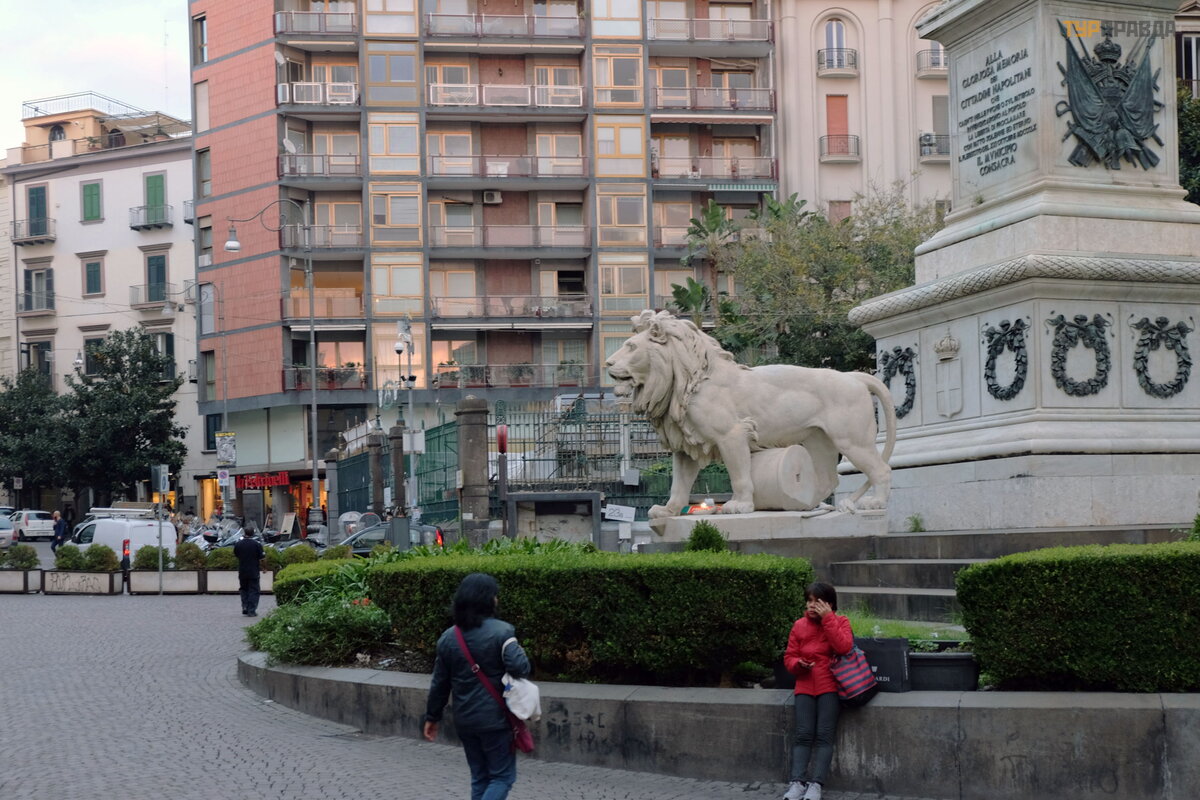 The curved pedestrian via Chiaia is full of shops and cafes
The curved pedestrian via Chiaia is full of shops and cafes
Already at dusk, we reached the corner of Plebeshito Square
And we reached the Piazza Municipality where we went down to the Municipio metro station. Thus ended our another day in Naples.
Continued here >>>< /strong>
